
Lost in Math: How Beauty Leads Physics Astray
by
Sabine Hossenfelder
Published 11 Jun 2018
“Preliminary inconclusive hint of evidence against optimal fine tuning of the cosmological constant for maximizing the fraction of baryons becoming life.” arXiv:1101.2444. 31. Martel H, Shapiro PR, Weinberg S. 1998. “Likely values of the cosmological constant.” Astrophys J. 492:29. arXiv:astro-ph/9701099. 32. Rumors that the cosmological constant was not zero and instead positive-valued had been around as early as a decade previously, based on other measurements that, however, remained somewhat inconclusive. See, for example, Efstathiou G, Sutherland WJ, Maddox SJ. 1990. “The cosmological constant and cold dark matter.” Nature 348:705–707; Krauss LM, Turner MS. 1995.
…
Once we know what types of energy and matter fill the universe, we can reconstruct the past. In the early universe, dark energy (in the form of a cosmological constant) was negligibly small compared to matter. That’s because the density of matter decreases as the universe expands, whereas a cosmological constant remains, well, constant. So if they are comparably large today, with a ratio of roughly 2:1, then in the early universe the density of matter must have been much larger than the energy density of the cosmological constant. FIGURE 7. The energy content of the universe for people who don’t like pie charts. At 1017 Kelvin, therefore, we start with a soup composed almost entirely of matter and dark matter.
…
And so was invented R-parity, a symmetry that, when combined with supersymmetry, simply forbids the unobserved interactions because they would conflict with the new symmetry postulate. The problems didn’t stop there. Until the late 1990s, string theorists had dealt with strings only in space-times that have a negative cosmological constant. When the cosmological constant was measured and turned out to be positive, theorists quickly had to invent a way to accommodate that. They developed a construction that works with the positive number, but string theory is still best understood for the case with a negative cosmological constant.2 This case is what most string theorists still work on. It does not, however, describe our universe. None of that would have mattered had the many amendments been successful in creating a unique theory of everything.
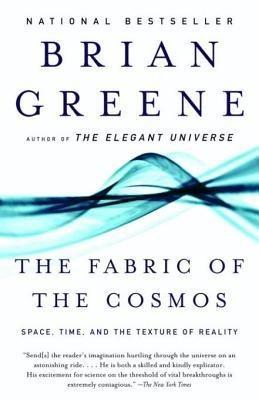
The Fabric of the Cosmos
by
Brian Greene
Published 1 Jan 2003
Physicists today invoke phrases like “the energy of space itself” or “dark energy” when discussing the meaning of Einstein’s cosmological constant, because if there were a cosmological constant, space would be filled with a transparent, amorphous presence that you wouldn’t be able to see directly; space filled with a cosmological constant would still look dark. (This resembles the old notion of an aether and the newer notion of a Higgs field that has acquired a nonzero value throughout space. The latter similarity is more than mere coincidence since there is an important connection between a cosmological constant and Higgs fields, which we will come to shortly.) But even without specifying the origin or identity of the cosmological constant, Einstein was able to work out its gravitational implications, and the answer he found was remarkable.
…
In fact, he found that as far as energy and pressure are concerned, a Higgs field that’s caught on a plateau has the same properties as a cosmological constant: it suffuses space with energy and negative pressure, and in exactly the same proportions as a cosmological constant. So Guth discovered that a supercooled Higgs field does have an important effect on the expansion of space: like a cosmological constant, it exerts a repulsive gravitational force that drives space to expand.9 At this point, since you are already familiar with negative pressure and repulsive gravity, you may be thinking, All right, it’s nice that Guth found a specific physical mechanism for realizing Einstein’s idea of a cosmological constant, but so what?
…
It’s interesting to note that, years before the supernova results, prescient theoretical works by Jim Peebles at Princeton, and also by Lawrence Krauss of Case Western and Michael Turner of the University of Chicago, and Gary Steigman of Ohio State, had suggested that the universe might have a small nonzero cosmological constant. At the time, most physicists did not take this suggestion too seriously, but now, with the supernova data, the attitude has changed significantly. Also note that earlier in the chapter we saw that the outward push of a cosmological constant can be mimicked by a Higgs field that, like the frog on the plateau, is perched above its minimum energy configuration. So, while a cosmological constant fits the data well, a more precise statement is that the supernova researchers concluded that space must be filled with something like a cosmological constant that generates an outward push.
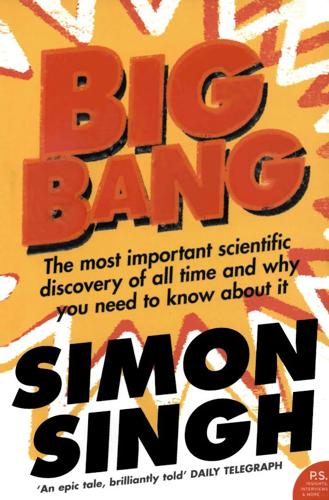
Big Bang
by
Simon Singh
Published 1 Jan 2004
Friedmann’s research came to a climax in 1922, when he published an article in the journal Zeitschrift für Physik. Whereas Einstein had argued for a finely tuned cosmological constant and a finely balanced universe, Friedmann now described how different models of the universe could be created with various values of the cosmological constant. Most importantly, he outlined a model of the universe in which the cosmological constant was set to zero. Such a model was effectively based on Einstein’s original formula for gravity, without any cosmological constant. With no cosmological constant to counteract gravitational attraction, Friedmann’s model was vulnerable to gravity’s relentless pull.
…
He saw that his formula for gravity could be adapted to include a new feature known as the cosmological constant. This imbued empty space with an inherent pressure that pushed the universe apart. In other words, the cosmological constant gave rise to a new repulsive force throughout the universe which effectively worked against the gravitational attraction of all the stars. This was a sort of anti-gravity, whose strength depended on the value given to the constant (which in theory could adopt any arbitrary value). Einstein realised that by carefully selecting the value of the cosmological constant he could exactly counteract conventional gravitational attraction and stop the universe from collapsing.
…
Earth), 3. succeed where Newton failed in high gravity (e.g. Mercury). Many cosmologists were happy with Einstein’s cosmological constant, because it seemed to do the trick of making general relativity compatible with a static eternal universe. But no one had much of a clue about what the cosmological constant actually represented. In some ways it was on a par with Ptolemy’s epicycles, inasmuch as it was an ad hoc tweak that allowed Einstein to get the right result. Even Einstein sheepishly admitted that this was the case when he confessed that the cosmological constant was ‘necessary only for the purpose of making a quasi-static distribution of matter’.

From eternity to here: the quest for the ultimate theory of time
by
Sean M. Carroll
Published 15 Jan 2010
When Einstein first proposed the cosmological constant in 1917, his motivation was to explain a static universe, one that wasn’t expanding or contracting. This wasn’t a misguided philosophical stance—it was the best understanding according to the astronomy of the day; Hubble wouldn’t discover the expansion of the universe until 1929. So Einstein imagined a universe in delicate balance between the pull of gravity among galaxies and the push of the cosmological constant. Once he learned of Hubble’s discovery, he regretted ever introducing the cosmological constant—had he resisted the temptation, he might have predicted the expansion of the universe before it was discovered.
…
So the simplest possible model for dark energy would be one featuring an absolutely constant density of energy through all space and time. And in fact, that’s an old idea, dating back to Einstein: He called it “the cosmological constant,” and these days we often call it “vacuum energy.” (Some people may try to convince you that there is some difference between vacuum energy and the cosmological constant—don’t fall for it. The only difference is which side of the equation you put it on, and that’s no difference at all.) What we’re suggesting is that every cubic centimeter of space—out in the desolate cold between the galaxies, or at the center of the Sun, or right in front of your face—there is a certain amount of energy, over and above whatever comes from the particles and photons and other things that are actually located in that little cube.
…
These virtual particles are not especially mysterious or hypothetical—they are definitely there, and they have measurable effects in particle physics that have been observed many times over. Virtual particles carry energy, and that energy contributes to the cosmological constant. We can add up the effects of all such particles to obtain an estimate for how large the cosmological constant should be. But it wouldn’t be right to include the effects of particles with arbitrarily high energies. We don’t believe that our conventional understanding of particle physics is adequate for very high-energy events—at some point, we have to take account of the effects of quantum gravity, the marriage of general relativity with quantum mechanics, which remains an incomplete theory at the moment.
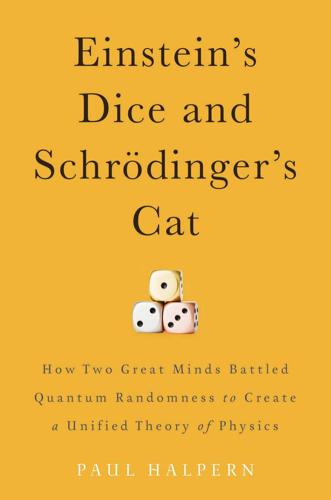
Einstein's Dice and Schrödinger's Cat: How Two Great Minds Battled Quantum Randomness to Create a Unified Theory of Physics
by
Paul Halpern
Published 13 Apr 2015
We wouldn’t win any architecture awards for our design, but it would do the job. Similarly, the cosmological constant term, through inelegant, performed the task Einstein set out to accomplish: preserving cosmic stability. In 1917, Einstein published his static universe model, including the cosmological constant as part of his field equations. However, he couldn’t rightfully claim that his solution was unique. Dutch mathematician Willem de Sitter cleverly demonstrated that in the absence of matter, Einstein’s field equations produced solutions that would blow up exponentially, driven ever outward by the cosmological constant. De Sitter’s model showed that as long as the cosmological constant exists, emptiness is unstable.
…
Finally, dating back to his earliest papers on general relativity, published in 1917, Schrödinger maintained an active interest in the cosmological constant term, which Einstein had discarded. 206 The Last Waltz: Einstein’s and Schrödinger’s Final Years Einstein had set aside the cosmological term in light of Hubble’s discovery of cosmological expansion. Schrödinger, on the other hand, thought the term was essential, albeit small. He made a case for the cosmological constant in his 1950 book Space-Time Structure, a comprehensive survey of general relativity and related theories. He argued that one advantage of his affine theory was that it explained the source of the cosmological constant in a natural way and mandated that it have a value that was small but not zero.11 Schrödinger’s advocacy of a small but nonzero cosmological constant was certainly prescient.
…
Therefore, Einstein reasonably believed that space was static and saw expanding models as unphysical. To remedy the situation, he took the rather drastic step of adding an extra term to the geometric side of his equations to produce what he saw as credible solutions. Known as the “cosmological constant” and symbolized by the Greek letter lambda (Λ), the term acts as a hedge against gravitational instability by stretching the geometry of space in the opposite direction. He didn’t assign the cosmological constant any physical meaning, but at the time he saw it as essential to the integrity of his theory. In our desert canopy analogy, imagine that the entire structure we had constructed was slowly sinking into the sand.
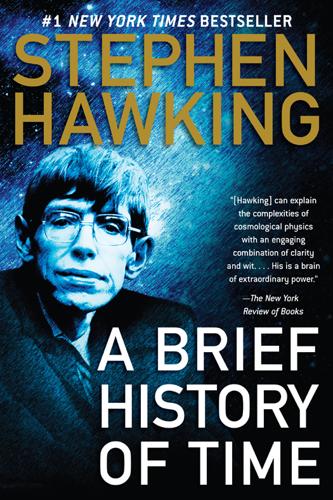
A Brief History of Time
by
Stephen Hawking
Published 16 Aug 2011
This special extra energy can be shown to have an antigravitational effect: it would have acted just like the cosmological constant that Einstein introduced into general relativity when he was trying to construct a static model of the universe. Since the universe would already be expanding just as in the hot big bang model, the repulsive effect of this cosmological constant would therefore have made the universe expand at an ever-increasing rate. Even in regions where there were more matter particles than average, the gravitational attraction of the matter would have been outweighed by the repulsion of the effective cosmological constant. Thus these regions would also expand in an accelerating inflationary manner.
…
However, given Einstein’s record of ill-founded opposition to gravitational collapse and the uncertainty principle, maybe this was an encouraging sign. The solution Gödel found doesn’t correspond to the universe we live in because we can show that the universe is not rotating. It also had a non-zero value of the cosmological constant that Einstein introduced when he thought the universe was unchanging. After Hubble discovered the expansion of the universe, there was no need for a cosmological constant and it is now generally believed to be zero. However, other more reasonable space-times that are allowed by general relativity and which permit travel into the past have since been found. One is in the interior of a rotating black hole.
…
Yet so strong was the belief in a static universe that it persisted into the early twentieth century. Even Einstein, when he formulated the general theory of relativity in 1915, was so sure that the universe had to be static that he modified his theory to make this possible, introducing a so-called cosmological constant into his equations. Einstein introduced a new “antigravity” force, which, unlike other forces, did not come from any particular source but was built into the very fabric of space-time. He claimed that space-time had an inbuilt tendency to expand, and this could be made to balance exactly the attraction of all the matter in the universe, so that a static universe would result.
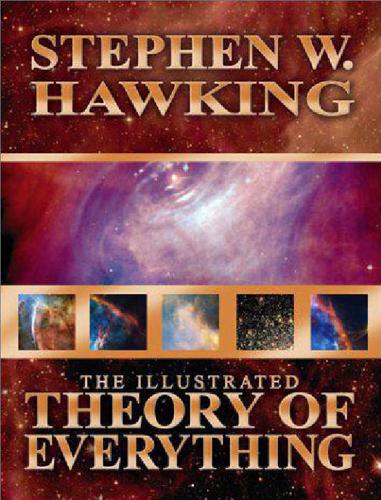
Illustrated Theory of Everything: The Origin and Fate of the Universe
by
Stephen Hawking
Published 1 Aug 2009
If this happened, the universe would bein an unstable state, with more energy than if the symmetry had been broken.This special extra energy can be shown to have an antigravitational effect. Itwould act just like a cosmological constant. Einstein introduced the cosmological constant into general relativity when hewas trying to construct a static model of the universe. However,in this case,the universe would already be expanding. The repulsive effect of this cosmo-logical constant would therefore have made the universe expand at an ever-increasing rate. Even in regions where there were more matter particles thanaverage, the gravitational attraction of the matter would have been out-weighed by the repulsion of the effective cosmological constant. Thus, theseregions would also expand in an accelerating inflationary manner.
…
Even when Einstein formulated thegeneral theory of relativity in 1915, he was sure that the universe had to bestatic. He therefore modified his theory to make this possible, introducing a so-called cosmological constant into his equations. This was a new “antigravity”force, which, unlike other forces, did not come from any particular source, butwas built into the very fabric of space-time. His cosmological constant gavespace-time an inbuilt tendency to expand, and this could be made to exactlybalance the attraction of all the matter in the universe so that a static universewould result. Only one man, it seems, was willing to take general relativity at face value.While Einstein and other physicists were looking for ways of avoiding generalrelativity’s prediction of a nonstatic universe, the Russian physicist AlexanderFriedmann instead set about explaining it.
…
This means thatthe actual values of the masses and the strengths of the forces cannot bepredicted from the theory. Instead, they have to be chosen to fit the observa-tions. In the case of general relativity, there are only two quantities that can beadjusted: the strength of gravity and the value of the cosmological constant. Butadjusting these is not sufficient to remove all the infinities. One therefore hasa theory that seems to predict that certain quantities, such as the curvature ofspace-time, are really infinite, yet these quantities can be observed andmeasured to be perfectly finite. In an attempt to overcome this problem, a the-ory called “supergravity” was suggested in 1976.
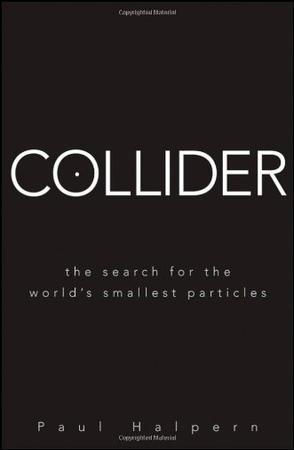
Collider
by
Paul Halpern
Published 3 Aug 2009
Once he realized the implications of Hubble’s findings, Einstein discarded the cosmological constant term, calling it his “greatest blunder.” The result was a theory that modeled a steadily growing universe. As Russian theorist Alexander Friedman had demonstrated in previous work, depending on the density of the universe compared to a critical value, this growth would either continue forever or reverse course someday. Recent astronomical results have indicated, however, that not only is the universe’s expansion continuing, it is actually speeding up. Consequently, some theorists have suggested a revival of the cosmological constant as a possible explanation of universal acceleration.
…
Some physicists have represented dark energy by restoring Einstein’s once-discarded cosmological constant term to general relativity. Although adding such a constant antigravity term would be a simple move, it could use some physical motivation. Physicists would be loath to add anything to a well-established theory without understanding the need for the new term on a fundamental level. That would mean interpreting the field theory behind it. Current field theories, however, support a much larger value of the vacuum energy that would need to be almost, but not exactly, canceled out to yield a reasonable cosmological constant. Thus, matching experimental bounds for cosmic acceleration has proven a daunting task.
…
Inserting a sample distribution of matter into the equations of general relativity, he was astonished to find the resulting geometry to be unstable—expanding or contracting with just the tiniest nudge. It was like a rickety building that would topple over with the mere hint of a breeze. Given his expectations for large-scale constancy, that wouldn’t do. To stabilize his theory he added an extra term, called the cosmological constant, whose purpose was essentially to serve as a kind of “antigravity”—preventing things on the largest scale from clumping together too much. Then in 1929, American astronomer Edwin Hubble made an astonishing discovery. Data taken at the Mount Wilson Observatory in Southern California demonstrated that all of the other galaxies in the universe, except for the relatively close ones, are moving away from our own Milky Way galaxy.

The Grand Design
by
Stephen Hawking
and
Leonard Mlodinow
Published 14 Jun 2010
The most impressive fine-tuning coincidence involves the so-called cosmological constant in Einstein’s equations of general relativity. As we’ve said, in 1915, when he formulated the theory, Einstein believed that the universe was static, that is, neither expanding nor contracting. Since all matter attracts other matter, he introduced into his theory a new antigravity force to combat the tendency of the universe to collapse onto itself. This force, unlike other forces, did not come from any particular source but was built into the very fabric of space-time. The cosmological constant describes the strength of that force. When it was discovered that the universe was not static, Einstein eliminated the cosmological constant from his theory and called including it the greatest blunder of his life.
…
The cosmological constant describes the strength of that force. When it was discovered that the universe was not static, Einstein eliminated the cosmological constant from his theory and called including it the greatest blunder of his life. But in 1998 observations of very distant supernovas revealed that the universe is expanding at an accelerating rate, an effect that is not possible without some kind of repulsive force acting throughout space. The cosmological constant was resurrected. Since we now know that its value is not zero, the question remains, why does it have the value that it does? Physicists have created arguments explaining how it might arise due to quantum mechanical effects, but the value they calculate is about 120 orders of magnitude (a 1 followed by 120 zeroes) stronger than the actual value, obtained through the supernova observations.
…
Physicists have created arguments explaining how it might arise due to quantum mechanical effects, but the value they calculate is about 120 orders of magnitude (a 1 followed by 120 zeroes) stronger than the actual value, obtained through the supernova observations. That means that either the reasoning employed in the calculation was wrong or else some other effect exists that miraculously cancels all but an unimaginably tiny fraction of the number calculated. The one thing that is certain is that if the value of the cosmological constant were much larger than it is, our universe would have blown itself apart before galaxies could form and—once again—life as we know it would be impossible. What can we make of these coincidences? Luck in the precise form and nature of fundamental physical law is a different kind of luck from the luck we find in environmental factors.
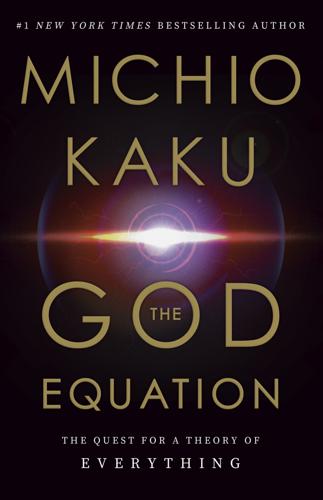
The God Equation: The Quest for a Theory of Everything
by
Michio Kaku
Published 5 Apr 2021
By carefully analyzing the galaxies, Hubble found that, on average, the galaxies were redshifted and so moving away from us. The universe is expanding.) In 1931, Einstein visited the Mount Wilson Observatory and met with Hubble. When Einstein was told that the cosmological constant was unnecessary, that the universe was expanding after all, he admitted that the cosmological constant was his “greatest blunder.” (Actually, as we shall see, the cosmological constant has made a comeback in recent years, so even his blunders apparently open entirely new areas of scientific investigation.) It was also possible to take this result one step further and calculate the age of the universe.
…
(He did not realize this at the time, but this was the solution to the question asked by Richard Bentley. The universe did not collapse under gravity because the universe was expanding, overcoming the tendency to collapse.) In order to find a static universe, Einstein was forced to add a fudge factor (called the cosmological constant) into his equations. By adjusting its value by hand, he could cancel out the expansion or contraction of the universe. Later, in 1929, astronomer Edwin Hubble, by using the giant Mount Wilson Observatory telescope in California, was able to make a startling discovery. The universe was expanding after all, just as Einstein’s equations originally predicted.
…
The universe will expand so quickly that the night sky will become totally black (since light cannot reach us from neighboring stars) and everything approaches absolute zero. At that temperature, life cannot exist. Even the molecules in outer space lose their energy. What might be driving this runaway expansion is something that was once discarded by Einstein in the 1920s, the cosmological constant, the energy of the vacuum, now called dark energy. Surprisingly, the amount of dark energy in the universe is enormous. More than 68.3 percent of all matter and energy in the universe is in this mysterious form. (Collectively, dark energy and dark matter comprise most of the matter/energy, but they are two distinct entities and should not be confused with each other.)
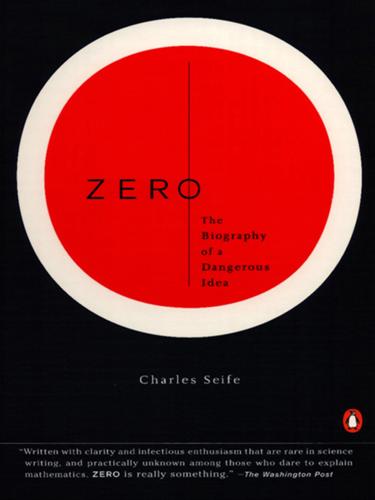
Zero: The Biography of a Dangerous Idea
by
Charles Seife
Published 31 Aug 2000
To Einstein, these ideas were abhorrent. Like Aristotle, he implicitly assumed that the universe was static, constant, and eternal. The only way out was to “correct” his equations of general relativity to stave off the impending destruction. He did this by adding a cosmological constant, an as yet undetected force that counteracts the force of gravity. The cosmological constant’s push would balance out gravity’s pull; instead of collapsing, the universe could stay in a steady balance, neither collapsing nor expanding. Postulating the existence of such a mysterious force was a desperate act. “I have…again perpetrated something about gravitation theory which somewhat exposes me to the danger of being confined in a madhouse,” wrote Einstein, but he was so worried about the impending destruction of the universe that he was forced to take such a dramatic step.
…
The expansion of the universe isn’t slowing down. It might even be speeding up. The supernova data imply that the universe is getting bigger and bigger, faster and faster. If this is the case, there is little chance of a big crunch, because something is opposing the force of gravity. Once again physicists are talking about the cosmological constant—the mysterious term that Einstein added to his equations to balance the push of gravity. Einstein’s biggest blunder might not have been a blunder after all. The mysterious force, once again, might be the force of the vacuum. The tiny particles that seethe through space-time exert a gentle outward push, stretching the fabric of space-time imperceptibly.
…
Black Holes and Time Warps. New York: W. W. Norton, 1994. Thorpe, J. A. Elementary Topics in Differential Geometry. New York: Springer-Verlag, 1979. Thucydides. History of the Peloponnesian War. Trans. Rex Warner. London: Penguin Books, 1954. Turok, Neil, and S. W. Hawking. “Open Inflation, the Four Form and the Cosmological Constant.” Los Alamos National Labs Archive: hep-th/9803156 v4. The Upanishads. Trans. Juan Mascaro. London: Penguin Books, 1965. Urmson, J. O., and Jonathan Ree, eds. The Concise Encyclopedia of Western Philosophy and Philosophers. London: Routledge, 1996. Valenkin, Naum Yakovlevich. In Search of Infinity.
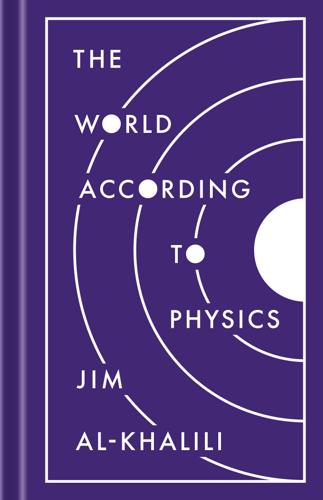
The World According to Physics
by
Jim Al-Khalili
Published 10 Mar 2020
Instead, we say it is left in its ground, or vacuum, state, but there will still be virtual particles popping in and out of existence within this vacuum all the time, borrowing the energy from their surroundings in order to exist, but paying it back just as quickly when they disappear again. So to say that the quantum vacuum of empty space has zero energy would be the same as claiming a calm ocean has no depth. The equivalent of water beneath the ocean surface is this dark energy—it is the cosmological constant. However, having a mathematical symbol for dark energy does not mean we entirely understand its nature yet. Astronomical measurements suggest that the cosmological constant has a certain numerical value, but, like the mass of the Higgs boson in the Standard Model, we do not know why it has this value. This long-standing problem in physics is known as fine-tuning and is very unsatisfying.
…
But until we truly understand the nature of dark energy, and indeed the properties of the very early universe (see the next section), we should not be too quick to conjecture about its final fate. It’s a long way off, and anything could happen between now and then! Until a few years ago, I would have said we know even less about dark energy than we do about dark matter, but that is now changing. There is a quantity in Einstein’s equations of general relativity, known as the cosmological constant (and denoted by the Greek letter Λ, or lambda), that fits the bill. What we call dark energy is most likely the energy of empty space itself—what is referred to as the quantum vacuum. We have seen how everything ultimately comes down to quantum fields in the end. All the different particles that make up matter and energy, whether quarks, electrons, photons, or Higgs bosons, can be regarded merely as localised excitations of these quantum fields—like waves on the surface of an ocean.
…
INDEX absolute zero, 102 Adams, Douglas, 5 AdS/CFT (anti–de Sitter/conformal theory correspondence; gauge/ gravity duality), 232–33 alpha particles, 101–2 Anderson, Carl, 103–4 Anderson, Philip, 47 Andromeda galaxy, 98 antigravity, 212–13 antimatter, 7, 13, 103–5 antiquarks, 96n1, 176n2 Anu (Sumerian god), 1 Archimedes, 16, 25 Aristotle, 16, 45, 57–58, 74, 77 artificial intelligence (AI), 161, 235, 240, 250, 255, 256–57 atomic clocks, 39 atomism, 16–17, 45 atoms, 15; composition of, 224; types of, 16–17 axions, 200 Banks, Joseph, 108 Bell, John, 126–27 beta radioactivity, 94, 96 Big Bang, 7, 32, 34, 98–101, 103, 150; cosmology model of, 179; in eternal inflation theory, 216; verification of, 269–70 binary data, 251 binary pulsars, 226 biology, 21, 111, 161, 236, 242–44 biomass, 151 biophysics, 242 bits, 251 black holes, 195, 221, 223, 233; entropy of, 279; evaporation of, 215, 220; formation of, 106; gravitational pull from, 72; Hawking radiation emitted from, 24, 220 block universe model, 68–69, 70–71, 79–81 Bohm, David, 136 Bohr, Niels, 122–23, 124, 125, 132 Boltzmann, Ludwig, 46 Born’s rule, 124 Bose-Einstein condensates, 226 bosons, 6–7, 13, 25, 93, 96–97, 181 Broglie, Louis de, 136 bubble universes, 217–18 Bullet Cluster, 197 butterfly effect, 157–58, 160 carbon, 106 celestial mechanics, 55 CERN (European Organization for Nuclear Research), 174, 228 chaos, 21, 160–61 chemistry, 21, 91, 236, 241–42, 256; quantum theory and, 9, 117, 173, 246 Classical Physics, 111–12 climate, 151, 240, 271, 272–73 cloud technology, 255 COBE satellite, 199 cognitive dissonance, 272 cold dark matter, 179, 200 colour charge, 95–96, 175–76 comets, 18 complexity, 21 complex systems, 161 computer science, 241, 246, 250–58 concordance model, 179 condensed matter, 232, 233, 236 confirmation bias, 272, 277 conformal cyclic cosmology, 215–16 conservation, laws of, 41 consistent histories interpretation, 127 conspiracy theories, 271–72 constrained minimal supersymmetry, 231 Copenhagen interpretation, xiii, 123, 125, 127, 128 Copernican (heliocentric) model, 4, 26–27, 126 Copernicus, Nicolaus, 27 Cosmic Background Explorer (Explorer 66), 199n2 cosmic inflation, 208–19, 276 cosmic microwave background (CMB), 34, 101, 197, 198–99 cosmological constant, 203 cosmology, 12 creation myths, 1 Crick, Francis, 243 CT (computed tomography), 246 curved spacetime, 64n2, 78, 82, 187, 234; dark matter and, 196; gravitational field linked to 72–73, 163, 170; inflation and, 209 dark energy, 7, 9, 193, 202–5, 210, 226, 276 dark matter, 7, 9, 42, 105–6, 179, 193–201, 231, 276 de Broglie–Bohm theory, 137 decoherence, 133, 135 Delbrück, Max, 243 Democritus, 16, 44–45 Descartes, René, 55, 57–58, 59–60, 74, 77 determinism, 155–58 diffraction, 114 Dirac, Paul, 13, 14, 103, 171–72 Dirac notation, 124 disorder, 21 DNA, 243, 249 Doppler effect, 63 double helix, 243 doubt, in scientific inquiry, 266–67, 274 dwarf galaxies, 197 dynamical collapse interpretation, 127 economics, 161 Einstein, Albert, xiv, 124, 222–23, 280; field equations of, 82, 129; light quanta hypothesized by, 112–13; Newtonian theory replaced by, 8, 36, 61; nonlocality and entanglement mistrusted by, 131–32; as philosophical realist, 130; photoelectric effect explained by, 29–30; thought experiments by, 56.
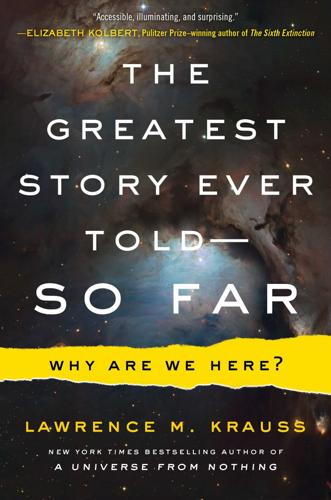
The Greatest Story Ever Told--So Far
by
Lawrence M. Krauss
Published 21 Mar 2017
No one has any sensible first-principles explanation using known particle physics mechanisms for how the ground-state energy of the universe could be nonzero—resulting in Einstein’s cosmological constant—and yet so small as to allow the kind of gentle acceleration we are now experiencing. (One plausible explanation does exist—first due to Steve Weinberg—though it is speculative and relies on speculative ideas about possible physics well beyond the realm of anything we currently understand. If there are many universes, and the energy density in empty space, assuming it is a cosmological constant, is not fixed by fundamental physics constraints, but instead randomly varies from universe to universe, then only in those universes in which the energy in empty space is not much bigger than the value we measure would galaxies be able to form, and then would stars be able to form, and only then planets, and only then astronomers . . .)
…
Naturally the questions arise, What could be causing this current accelerated expansion, and What is the source of this new kind of energy? Two possibilities present themselves. First, it could be a fundamental property of empty space, a possibility actually presaged by Albert Einstein shortly after he developed the General Theory of Relativity, which he realized could accommodate something he called a “cosmological constant,” but which we now realize could simply represent a nonzero ground-state energy of the universe that will exist indefinitely into the future. Or second, it could be energy stored in yet another invisible background scalar field in the universe. If this is the case, then the next obvious question is, will this energy be released in yet another, future inflationary-like phase transition as the universe continues to cool down?
…
Nevertheless, the universe is the way it is, and the fact that current fundamental theory does not make a first-principles prediction that explains something as fundamental as the energy of empty space implies nothing mystical. As I have said, lack of understanding is not evidence for God. It is merely evidence of a lack of understanding. Given that we do not know the source of the inferred energy in empty space, we are free to hope for the best, and in this case perhaps that means hoping that the cosmological constant explanation is correct rather than its being due to some as yet undiscovered scalar field that may one day relax into a new state, releasing the energy currently stored in space. Recall that because of the coupling of the Higgs field to the rest of the matter in the universe, when the field condensed into its electroweak symmetry-breaking state, the properties of matter and the forces that govern the interactions of matter changed dramatically.

The Milky Way: An Autobiography of Our Galaxy
by
Moiya McTier
Published 14 Aug 2022
Your scientists have called this convenient quality the cosmological constant, depicted in their equations as Λ. The most widely accepted model of our universe among your scientists is the Λ-CDM model. It dictates that the cosmological constant and cold dark matter are necessary to explain your observations. A less popular idea is that dark energy is the work of yet another quantum field, this one called “quintessence.” It means the fifth essence of the universe, after normal matter, dark matter, radiation, and neutrinos (i.e., baryons, whatever dark matter is made of, photons, and leptons). Unlike the cosmological constant, quintessence is not an unavoidable consequence of having empty space.
…
Using an extremely sensitive camera mounted on one of their older telescopes in Chile, they’ve mapped more than three hundred million galaxies looking back billions of years. If the acceleration of the universe’s expansion has always been the same—its acceleration, not its speed, mind you, human—that’s a point for the cosmological constant. A variable acceleration would point towards quintessence. The DES team still has a lot of data to comb through, but I suspect that they’ll have an exciting announcement not too long after this book is made available. If not, human scientists have high hopes for the upcoming Nancy Grace Roman Space Telescope (formerly the Wide-Field InfraRed Survey Telescope, WFIRST).
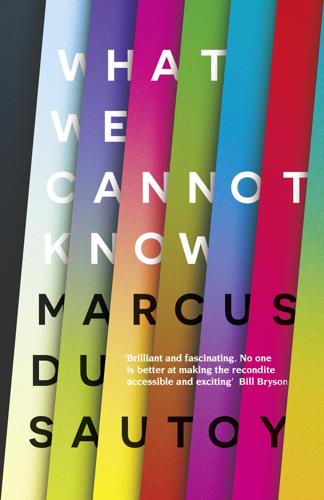
What We Cannot Know: Explorations at the Edge of Knowledge
by
Marcus Du Sautoy
Published 18 May 2016
Lemaître deduced that the universe must be expanding as a consequence of Einstein’s equations for gravitation. When Einstein heard about the proposal, he dismissed it with the damning declaration: ‘Your calculations might be correct but your physics is atrocious.’ Einstein was so confident that Lemaître was wrong that he ended up sticking something called the cosmological constant into his equations to try and force the universe to be static and thus scupper Lemaître’s prediction. Lemaître didn’t help his cause by publishing his findings in an obscure Belgian journal. But once Hubble’s observations supported the idea of an expanding universe, Einstein changed his tune.
…
Dubbed ‘dark energy’, the ‘dark’ is used in cosmology to indicate that it’s something that doesn’t seem to interact with light or other forms of electromagnetic radiation. In other words, we can’t detect it. There are conjectures about what this dark energy might be. One of them concerns the cosmological constant that Einstein famously inserted into his equations to try to make the universe static. But now that constant is being used to push space apart. Usually we would think of energy spread out across space as being used up or thinning out as space expands. But this energy is now thought of as a property of space itself.
…
With a universe expanding at a constant rate, my example of the ant on the expanding rubber band shows again that information travelling across an infinite universe would eventually reach us. But with an accelerating expansion there are things which will never cover the intervening space quickly enough to counter this. Using our current estimate for the cosmological constant that we think might be responsible for this expansion, we believe that the sphere from beyond which we will not receive any information sent today is currently 18 billion light years in radius. As the space between stars gets stretched, so the light from those stars gets redshifted, and the more the light gets stretched, the longer the wavelength.

Fool Me Twice: Fighting the Assault on Science in America
by
Shawn Lawrence Otto
Published 10 Oct 2011
A CATHOLIC PRIEST’S BIG BANG Georges Lemaître was a pudgy, pinkish Belgian Jesuit abbé—a Catholic priest—who also happened to be a skilled astronomer. Lemaître had noticed that Einstein’s general theory of relativity would have implied that the universe was expanding but for a troublesome little mathematical term called the cosmological constant that Einstein had inserted into his equations. Lemaitre saw no convincing reason why the cosmological constant should be there. In fact, Einstein himself had originally calculated that the universe was expanding, but he was a theoretician, not an astronomer. When he turned to astronomers for verification of his theory, he found that almost all of them held the notion that the universe existed in a steady state and there was no motion on a grand scale.
…
This meant to him that the universe is not infinitely old; it has a certain age, and that the moment of creation—which British astronomer Fred Hoyle later mockingly called the “big bang”—was analogous to God’s first command at the beginning of the good abbé’s most cherished book, the Bible: Let there be light. Hubble’s meticulously reported logic and observations convinced Einstein that he had been wrong about the cosmological constant. He made a pilgrimage from Germany to Mount Wilson Observatory outside of Pasadena, where he joined Hubble, Humason, Lemaître, and others to make a stunning public announcement. Unlike Shapley, Einstein changed his position and removed the cosmological constant from his general theory of relativity, later calling it “the biggest blunder of my life.” The universe was indeed expanding. SCIENCE ROCK STAR This dramatic mea culpa by Einstein drew even more attention to Hubble and the striking depictions of the immense universe coming from the swashbuckling astronomers atop the 5,715-foot Mount Wilson.
…
When he turned to astronomers for verification of his theory, he found that almost all of them held the notion that the universe existed in a steady state and there was no motion on a grand scale. So in deference to their observational experience, Einstein adjusted his general theory calculations with a mathematical “fudge factor”—the cosmological constant—that made the universe seem to be steady. Lemaître had independently been working off the same mathematical principles that Einstein had originally laid out, and in 1927 he wrote a dissenting paper in which he argued that the universe must be expanding, and that if it was, the redshifted light from stars was the result of this expansion.

Coming of Age in the Milky Way
by
Timothy Ferris
Published 30 Jun 1988
Faced with this disjunction between his theory and the empirical data, Einstein reluctantly concluded that there must be something wrong with the theory, and he modified its equations by adding a term that he called the cosmological constant. Symbolized by the Greek letter lambda, the new term was intended to make the radius of the universe hold steady with the passing of time. Einstein never liked the cosmological constant. He called it “gravely detrimental to the formal beauty of the theory,” pointing out that it was nothing more than a mathematical fiction, without any real physical basis, one that had been introduced solely to being the theory into accord with the observational facts.
…
And that, a velocity-distance relation, is what Hubble found for the galaxies. It was also, of course, just what the general theory of relativity had predicted, at least before being fettered by the lambda term. (Fumed Einstein, “If Hubble’s expansion had been discovered at the time of the creation of the general theory of relativity, the [cosmological constant] would never have been introduced.”)2 Yet Hubble, like Slipher, was isolated by the gulf that still separated the world of the American observational astronomers from that of Einstein and the other leading theoretical physicists in Europe. Hubble knew next to nothing of general relativity; neither did his boss, George Ellery Hale, who confessed that “the complications of the theory of relativity are altogether too much for my comprehension,” adding, “I fear it will always remain beyond my grasp.”3 Nor had either man heard of relativity’s prediction that the universe might be expanding.
…
The study of the origin of the universe. Cosmology. (1) The science concerned with discerning the structure and composition of the universe as a whole. Combines astronomy, astrophysics, particle physics, and a variety of mathematical approaches including geometry and topology. (2) A particular cosmological theory. Cosmological constant. A term sometimes employed in cosmology to express a force of “cosmic repulsion,” such as the energy released by the false vacuum thought to power exponential expansion of the universe in the inflationary universe models. Whether any such thing as cosmic repulsion exists or ever played a role in cosmic history remains an open question.
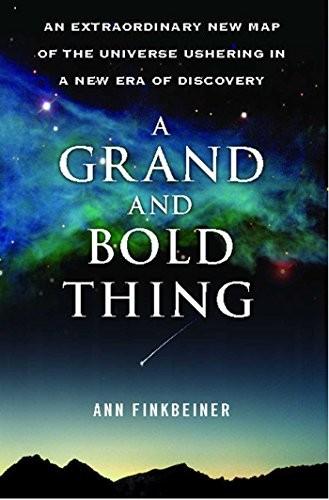
A Grand and Bold Thing: An Extraordinary New Map of the Universe Ushering
by
Ann K. Finkbeiner
Published 16 Aug 2010
And because cosmologists’ understanding of the universe is based on physics, the cluelessness extends to physics, mankind’s most basic science. Not that the physicists don’t have theories anyway: Maybe it’s just some sort of energy they hadn’t known about. Maybe gravity doesn’t work the way Albert Einstein’s theory of general relativity says it does. Maybe Einstein’s famous cosmological constant—which he put into the equations of general relativity to fudge the universe’s expansion and which he later took back out—was right after all and space/time has some weird springiness that acts like antigravity, and we call it dark energy. Maybe if physicists are ever able to understand the quantum physics of the exceedingly small in the same terms as the gravitational physics of the exceedingly large, they’ll come up with some other reason that the expansion of the universe is accelerating.
…
Index Acheron (star stream), 164 American Astronomical Society, 104–5, 175, 181–82, 195 American Museum of Natural History, 175–76 Andromeda galaxy, 31 Annis, Jim, 69–70, 71, 100–104, 105, 112, 144, 180 antigravity, 148 Apache Point Observatory, 33, 35, 36, 50, 53, 69, 76, 77, 79, 83–84, 97–99, 106, 176 description of, 97–98 enclosure of, 98 first light at, 100–104 plug lab of, 123 survey camera installed and tested at, 99–100 survey camera shipped to, 97–98, 99 Apache Point Observatory Galactic Evolution Experiment (APOGEE), 177 Apache Point Observers, 111–13 Apache Wheel, 143–44 Arcturus, 115 Arizona, University of, 52, 54, 180 Arp 305 (dwarf galaxy), 165 Associated Press, 105, 171 asteroids, 134, 160, 192 Asteroids to Cosmology (symposium), 194 astrocoders, 140 astrometric pipelines, 62 astrometry, 86 astronomy, 153–54 in shift to community collaboration, 178–79 Sloan survey and culture of, 186 technology and, 195–96 virtual observatory and, 167–69 wavelength communities in, 166–67 Astrophysical Research Consortium (ARC), 50, 70, 71, 79, 81, 89–90, 106, 154 Astrophysical Virtual Observatory, 167 asymptotic giant branch star, 176 AutoScope, 87, 89 Bahcall, John, 1–2, 43–44, 140 Ball Aerospace, 90 BAL quasars, 133 baryon acoustic oscillations (BAO), 145–46, 149–50, 185 Baryon Oscillation Spectroscopic Survey (BOSS), 150–51, 177, 194 BBC, 171 BD+17 (star), 141 Bell Labs, 60 Big Bang theory, 2, 32, 147, 187–88 naming of, 9 universe’s structure and, 145 see also universe bimodality of galaxy populations, 182–86 Black, Richard, 45 black cutworm, 113 black holes, 172, 173, 192 formation of, 190–91 Blanton, Michael, 176, 180, 182–84, 185, 193 Bloomberg, Michael, 88 Blouke, Morley, 23, 32, 59 Bochanski, John, 134 Boötes (constellation), 163 Boroski, Bill, 79, 118, 150–51 Boston Globe, 105 Bracker, Steve, 76–77 Briggs, John, 117–18 brightest cluster galaxy (BCG), 18–19, 144–45 Brinkmann, Jon, 117 brown dwarf stars, 135–36 Burles, Scott, 115, 127–29, 131 California, University of: at Berkeley, 29–30, 63 at Santa Cruz, 181 California Institute of Technology, 11, 14, 36, 167, 179 Cambridge University, 26, 163, 164 Canes Venatici, 163 Carey, Larry, 118, 129 Carnegie Mellon University, 122, 124 Carr, Michael, 93–94, 96–97, 99, 100 CBS News, 105 celestial equator, 116, 117 Ceres (asteroid), 160 Cetus (constellation), 164 Chandra (satellite), 169 charge-coupled device (CCD), 3, 85, 126, 162, 176 filters over, 59 in spectrographs, 23–24, 123–24 Chicago, University of, 30, 41, 50, 62, 177 description of, 35–36 institutional conflict and, 90, 132 Rockosi at, 94–95 Sloan survey funding and, 47, 81 spectroscopic pipeline and, 131–32 Cluster Working Group, 144–45 Cocytos (star stream), 164 Cohen, Hirsh, 41, 46–47, 48, 99, 120 color-color diagram, 106, 135, 136–37 Coma Berenices, 163 comet, 170 “Complete Survey of Galaxies, A,” see Sloan Digital Sky Survey Congress, U.S., 39, 78 Connolly, Andy, 155, 169 Copernicus (space telescope), 33 cosmic microwave background, 143, 146, 175, 195 cosmic rays, 64 cosmological constant, 148 Crafoord Prizes, 42, 195 critical path, 83–84 Crocker, Jim, 82–85, 86, 90–91, 105, 118 Leger appointed telescope engineer by, 110 monitor telescope problem and, 86, 87–88 Crooks, Jared, 181–82 curve generating process for primary mirror, 53 dark energy, 150, 177, 196 gravity and, 192 Gunn’s view of, 148 Dark Energy Survey, 177–78 dark matter, 2–3, 14, 188–89, 191, 193, 196 Davis, Marc, 125 deuterium, 33, 136 digital sky survey, see Sloan Digital Sky Survey Digital Sky Survey of the Northern Galactic Cap, see Sloan Digital Sky Survey digital telescope, 24 Dombeck, Tom, 75–76, 79, 82 Donleavy, J.
…
P., 133 Dressler, Alan, 20 drift scanning, 15–16, 102 advantage of, 116 at celestial equator, 116–17 dust, 167, 197 from comet, 170 light and, 125 in Milky Way, 125, 162 Dusty (software), 197 dwarf galaxies, 163–65 Early Data Release, 138, 158 East Tennessee State University, 165–66 Einstein, Albert, 11, 43, 148 cosmological constant of, 148 Eisenstein, Daniel, 145, 147, 178, 180 electrons, 137, 187–90 elements, formation of, 188, 190 elliptical galaxies, 173, 182–83, 185, 191, 192–93 endNight (software), 112 Energy, Department of, (DoE), U.S., 35, 37, 38, 39 eScience, 159 Evans, Mike, 79 evilmap (software), 128 Experimental Astrophysics Group, 38–39 Fan, Xiaohui, 106–7, 119, 133, 135, 136, 180 Federal Express, 122 Fermi National Accelerator Laboratory (Fermilab), 39, 45, 76, 82, 83, 104, 132, 138, 177, 180 fiber mapper and, 126–27 headquarters of, 37–38 photometric pipeline and, 62–66, 105, 122 Sloan survey archive and, 155–56 Sloan survey funding and, 47, 78–79 Sloan survey hardware and, 76 Sloan survey software and, 62, 117 software crisis and, 62, 65–68 fiber mapper, 126–31 Finkbeiner, Doug, 125, 128–29, 130, 180 photometric calibration and, 142–44 FIRST (sky survey), 167 First Light beer, 104 FK5 star, 115 Four-Shooter (CCD camera), 16, 20–21, 93, 117 Fourteenth European White Dwarf Workshop, 175 Frieman, Josh, 131 Frontiers of Astronomy (Hoyle), 9 galaxies, 16, 21, 30, 146, 160 basic shapes of, 182–85 BCG, 18–19, 144–45 bimodality of, 182–86 brightness of, 141 classification of, 170–71 dwarf, 162–65 earliest survey of, 25–26 elliptical, 173, 182–83, 185, 191, 192–93 evolution of, 182–85 first nonoptical survey of, 26–27 formation of, 162–63, 191–92 gravity and, 19 Green Pea, 172–73 irregular, 173 LRG, 145, 147, 150, 177, 192–93 mapping, 144–45 merger of, 163–64, 165, 184 Palomar survey of, 27–28, 169 redshift of, 11–13 satellite, 163 spectrum of, 23–24 spiral, 182–83, 185, 191 superclusters of, see superclusters in universe, 8–9 variety of, 22 Galaxy Zoo, 170–72, 173 Forum (website), 172 GALEX (sky survey), 167 Galileo Galilei, 29, 101 gamma rays, 27, 166 Gamow, George, 110 Gemini (telescope), 83 general relativity, theory of, 11, 148 Geological Survey, U.S., 157 Gillespie, Bruce, 98–99 cracked mirror and, 117–18 Gliese 229 (star), 135 globular clusters, 14, 162, 164 Goldberger, Murph, 45, 46 Gollust, Keith, 42–43 Gomory, Ralph, 46, 120 Google, 169, 179 Google Sky project, 169 Gott, Richard, 17 gravitational lenses, 14 gravity, 2–3, 19, 31, 146, 147, 148, 187 at beginning of universe, 187–89 black hole formation and, 190–91 dark energy and, 192 Gray, Hanna, 45, 48 Gray, Jim, 157, 167 Green Peas (galaxies), 172–73 Gruber Foundation Cosmology Prize, 195 Gunn, James Edward, 5–6, 25, 28, 33–34, 39, 43–44, 46, 53, 55–57, 59, 60–61, 70, 74, 75, 76, 83, 86, 89, 90, 91, 98, 99, 100, 106–7, 117, 118, 125, 126, 127, 140, 154, 158, 163, 178, 183, 187, 192 at Asteroids to Cosmology symposium, 194–95 astronomical surveys and, 16–22 astronomy interest of, 8–10 background of, 8–9, 14 college experience of, 10–14 on community-based astronomy, 179–80 on cosmology, 196 dark energy as viewed by, 148 early career of, 13–16 first light and, 101–4 Four-Shooter, built by, 16 Hubble Space Telescope and, 1–4 management crisis and, 80–81 mirror control mistake of, 119 personality of, 7–8 PFUEI built by, 15–16 photometric calibration, concern about, 141–42 on photometric pipeline, 67 prizes and awards of, 8, 42, 195 quasar cutoff and, 136 research style of, 14 Sloan III and, 194 on software, 85 spectroscopic system and, 49, 124 survey camera and, 59, 95–97 on technology in astronomy, 195–96 in Time, 10–11 Gunn-Peterson trough, 13–14, 16, 137 Hale Telescope, 11 halo stars, 162 Hanny (teacher), 172 Harvard University, 62, 180 Hawaii, University of, 179 Heckman, Tim, 48–49, 70–71, 90, 183, 194 Henry Norris Russell Lectureship, 195, 196 Hercules (constellation), 163 Herschel, William, 25–26, 27, 134 Hextex company, 52–53 Hogan, Craig, 73, 100 Hogg, David, 95, 125, 133, 139, 140, 142, 180, 182–84, 185, 193, 194 hoggPT (software), 142–43 Hoyle, Fred, 9–10, 14, 15, 26 Hubble, Edwin, 17, 26 Hubble constant, 17, 18 Hubble Space Telescope, 6, 24, 33, 43, 85, 169, 176 camera of, 3–4 Gunn and, 2, 3–4 mirror problem of, 1–2, 4–5 NASA and, 3, 4–5 hydrogen, 137, 188 in early universe, 189–90 Ia supernovae, 148–49 infrared astronomy, 166, 167, 169 infrared waves, 27, 125, 135, 162, 182–83 Installation Task Force, 76 Institute for Astronomy, University of Hawaii, 179 Institute of Advanced Study, 47, 62, 95, 142 postdocs at, 43–44 Intel, 158 International Virtual Observatory Alliance, 167 Internet, 170 Iowa State University, 165–66 irregular galaxies, 173 Ivezić, Željko, 134, 167, 197–98 Jet Propulsion Lab, 14 Johns Hopkins University, 50, 62, 79, 81, 83–84, 121, 135, 179 Sloan survey archives and, 155–56 Sloan survey funding and, 47–49 Sloan III and, 177 Juno (asteroid), 160 Jupiter (planet), 134 Keck telescope, 83, 137 Kent, Steve, 62–63, 66–67, 68–69, 79, 82, 156 Kentucky, University of, 197 Kitt Peak National Observatory, 23–24, 30–31, 35 Kleinman, Scot, 175 Knapp, Jill, 1–2, 55, 64, 70, 104, 119, 126, 131, 135, 176, 181, 197 Kolb, Edward “Rocky,” 37 Kron, Rich, 29–31, 34, 35, 39, 45, 55, 77, 104, 156, 177–78, 180 becomes survey director, 138 redshift survey idea of, 32–33 Lamb, Don, 36–37 Large Magellanic cloud, 31 Large Synoptic Survey Telescope (LSST), 179, 197 Lawrence Berkeley National Laboratory, 180 Legacy project, 177 Leger, French, 84, 112, 117, 124 cracked mirror problem and, 118 moths problem and, 114–15 as telescope engineer, 110–11 Leo (constellation), 163 Leo IV (dwarf galaxy), 163 Leo V (dwarf galaxy), 163 Lethe (star stream), 164 Lick Observatory, 29 light, 28 at beginning of universe, 187–89 dust and, 125 electromagnetic spectrum and, 167 photometry and, 140–41 Lightman, Alan, 21 Lintott, Chris, 170, 171–72, 173 Local Group, 31 Long, Dan, 102, 109, 116–17 luminous red galaxies (LRGs), 145, 147, 150, 177, 192–93 Lupton, Robert, 64–66, 67, 68–69, 96, 100–103, 106, 117, 121, 134, 140 MacArthur Foundation, 8 Magellan telescope, 47, 48 management crisis: astrometry problem and, 86 chronic lateness and, 75, 79 critical path schedules and, 83–84 Gunn and, 80–81 Installation Task Force and, 76 internecine conflict and, 75 money problems and, 75, 77, 81–83 Nash Committee and, 70, 82 neutral reviewer of, 81–83 postdocs and, 75 professional managers hired for, 75–78, 83–85, 86 science requirements debate and, 84–86 tiger teams and, 79–80, 81, 82 work breakdown structure and, 76, 81, 83–84 Mannery, Ed, 51, 53, 77, 98 Map of the Universe, see Sloan Digital Sky Survey Map of the Universe (Kron), 45 “Mapping the Universe,” 74 Margon, Bruce, 50, 89–90 Mars (planet), 134 matter, 2–3, 145–46, 147, 187 kinds of, 187–88 Max Planck Institute for Astronomy, 164 Max Planck Institute for Astrophysics, 183 methane, 135 Microsoft, 157, 158 WorldWide Telescope of, 169 Microsoft Research, 157 microwaves, 27, 125, 146, 189 Milky Way galaxy, 8, 14, 25, 29, 31, 45, 169, 174 dust in, 125, 162 formation of, 165, 191–92 galaxy formation and, 162–63 halo of, 163–65, 177 shape of, 161–62 star streams in, 164–65 tidal tails in, 164 Million Redshift survey, see Sloan Digital Sky Survey Mirror Lab, 52 cracked mirror repaired by, 118–19 monitor telescope, 86–88 Monoceros (constellation), 164 moths, miller, 113–14 Mountain, Matt, 175 Mount Hamilton, 29 M stars, 135 M31 (galaxy), 191–92 Multi-object APO Radial Velocity Exoplanet Large-area Survey (MARVELS), 177 multiwavelength sky surveys, 167 Nash, Tom, 70–71 Nash Committee, 70, 82 National Aeronautics and Space Administration (NASA), 1–2, 14, 34, 35 Chandra satellite of, 169 corporate style of, 4 data archives of, 154 GALEX survey of, 169 Hubble Space Telescope and, 3, 4–5 Spitzer space telescope of, 169 Stardust@Home project of, 170 WMAP satellite of, 175 National Medal of Science, 8, 195 National Science Foundation (NSF), 34–35, 41, 44, 52, 55, 73, 75, 76, 77, 83, 154, 156, 160, 161, 168, 179 National Virtual Observatory, 167 Naval Observatory, U.S., 55, 62, 77, 141–42, 156 near-field cosmology, 165 nebulae, 17, 25 Newberg, Heidi, 63, 65–68, 69, 163–64, 165, 180 Newcomb, Matt, 128–29 New General Catalogue (NGC), 26 Newton, Isaac, 187 New York Times, 45, 105 New York University, 180, 182 Nichol, Bob, 69, 74, 122, 124, 127–29, 170 Nobel Prize, 42, 195 Northern Galactic Cap, 45, 55, 176–77 Objectivity (software), 155–56, 157 ObjectStore (software), 155 Ohio State University, 194 Oke, John Beverly, 16, 18, 19–20, 34 One Two Three . . .
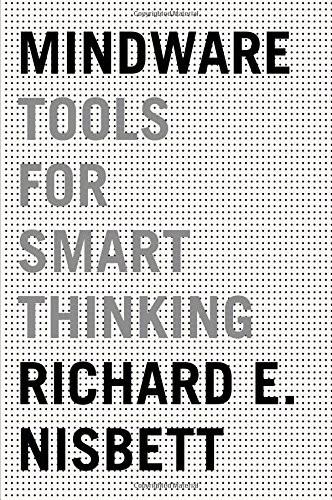
Mindware: Tools for Smart Thinking
by
Richard E. Nisbett
Published 17 Aug 2015
But of course there is no such property as levity, and gravity is a relation between objects rather than a property of a single object. Einstein had to add a cheater factor to his theories about the nature of the universe, namely, the cosmological constant, in order to account for what he was confident was the steady state of the universe. But of course the universe isn’t in a steady state as had been assumed since the time of Aristotle. As a Westerner thoroughly imbued with Greek assumptions about stasis, Einstein had a gut instinct that the universe should be constant, so he resorted to the cosmological constant to preserve the assumption. Chinese dialectical reasoning had an impact on the physicist Niels Bohr, who was highly knowledgeable about Eastern thought.
…
The French playwright Molière derides such explanations when he has a character attribute a sleeping potion’s effect to its “dormative virtues.” Ptolemy’s epicycles were an ad hoc solution to the problem that heavenly bodies did not orbit the earth in the perfect circles that were presumed by his contemporaries to be the necessary pattern of motion. Einstein’s postulation of the cosmological constant, noted in Chapter 14, was a special-purpose fix to the theory of general relativity. It was postulated just to account for the “fact” that the universe was in a steady state. Oops. It isn’t in a steady state. An astronomer has come up with an ad hoc theory to account for the failure of Mercury to orbit the sun in the way demanded by Newton’s theory.
…
conjecture consciousness; unconscious versus consensus, expert construals; see also inference; interpretation Consumer Reports context; choice influenced by; cultural differences and; dispositional factors versus contractual schemas contradiction(s) correlation; causation versus; coding and; experimental evidence versus; illusory; of influences on mood cosmological constant; multiple regression analysis of; of test scores and IQ cost-benefit analysis; in institutional choice and public policy; in political campaigns; pragmatic reasoning schemas and; strengths and weaknesses of; tragedy of the commons and; in valuation of human life covariation creationism critical incident stress debriefing (CISD) cultural differences; in beliefs; context and; in reasoning curves Dallas Chamber of Commerce Darley, John Darwin, Charles decision theory deconstructionists deductive reasoning defeasible reasoning Democratic Party Dennett, Daniel deontic schemas dependent variables; see also outcome variables Derrida, Jacques descriptive microeconomics designs, within versus between developmental psychology dialectical reasoning; context, causality, and contradiction in; culture and aging and; stability and change in; wisdom and Dickens, William dispersion dispositions, personal Dobzhansky, Theodosius double-blind randomized studies Drowned and the Saved, The (Levi) Drug Abuse Resistance Education (D.A.R.E.) program Drunk Tank Pink (Alter) Dubner, Stephen Durant, Will Early Childhood Longitudinal Study (ECLS) Eastern culture, differences between Western culture and, see cultural differences East Germany ecology economics; academic careers in; behavioral; classical; of cultural differences in social orientation; of decision theory; logic taught in courses on; macro- and micro-; Nobel Prize in; opportunity costs in; sunk costs in; see also cost-benefit analysis Eddington, Arthur S.
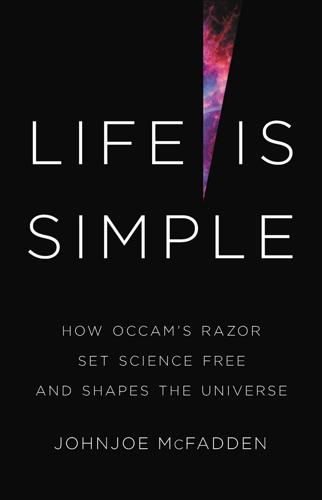
Life Is Simple: How Occam's Razor Set Science Free and Shapes the Universe
by
Johnjoe McFadden
Published 27 Sep 2021
Yet evidence for limited inheritance of several acquired characteristics, such as dietary preference, emerged in the 1990s to revive a form of Lamarckian inheritance known today as epigenetics.14 In the twentieth century Einstein invented a factor called the cosmological constant to make his theory of general relativity consistent with a static universe. He abandoned it when the universe was seen to be expanding. Yet in the twenty-first century, the cosmological constant has been revived to account for the dark energy of space itself. Similarly, as we discussed in the last chapter, nobody has ever disproven geocentricity because it’s not wrong. It just doesn’t work as well as the alternative.
…
To his surprise, he discovered that the universe it predicted was not stable: it must either contract or expand. To counter this instability and generate a static universe, Einstein added a cosmological constant, which is a kind of energy of space providing a kind of pressure against contraction. However, in 1929 the astronomer Edwin Hubble measured the velocities of galaxies and discovered, to his astonishment, that they are nearly all moving away from us as the universe is expanding. Einstein abandoned his cosmological constant, calling it the ‘biggest blunder’ of his life. If the universe is expanding into the future then it must have been much smaller in the past.
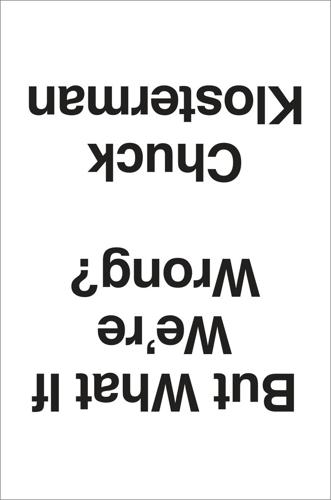
But What if We're Wrong? Thinking About the Present as if It Were the Past
by
Chuck Klosterman
Published 6 Jun 2016
The person most openly nervous is the theorist identified as the academic star of his generation: Nima Arkani-Hamed. Born to a pair of Iranian doctors in 1972 and raised in Canada, the long-haired Arkani-Hamed directly states that if the Higgs particle can’t be found, he will have wasted at least fifteen years of his life. Later, when discussing the bizarre numeric perfection of the “cosmological constant,”42 he says something that guys in his position don’t usually say. “This is the sort of thing that really keeps you up at night,” Arkani-Hamed says. “It really makes you wonder if we’ve got something about the whole picture—the big picture—totally, totally, totally wrong.” Or maybe not.
…
See Gaussian curve Bellamy, Matt, 63–64 Benét, Stephen Vincent, 93 Beowulf, 45 Berlin, Isaiah, 200 Berry, Chuck, 79, 84–86 bias, cultural, 25–27 Bigelow, Kathryn, 152 Bill of Rights, 209–12 bin Laden, Osama, 151–53 Blair, Jayson, 154n Blake, William, 32 blogging, 231–32 Blue Velvet (film), 166 blues music, 81 Boccherini, Luigi, 73 Bonaparte, Napoleon, 58, 156 Book of Lists, The (Wallechinsky, Wallace, and Wallace), 13 Book of Predictions, The (Wallechinsky, Wallace, and Wallace), 13–15 books Civil War literature, 22, 155 commercial success of, 27–28 diversity of authors, 25–27 evaluating writers, 22–28, 30–39 extinction of, 19–20 films based on, 53 finding deeper themes of, 47–48 literary canon, 32–33, 47–48 plot vs. tone, 21–22 Borland, Chris, 179–80 Bostrom, Nick, 121–23, 129 Boswell Sisters, 59 bowl games (college football), 192–93 boxing, 187 Boyhood (film), 140 Bridges to Babylon (album), 82 Brod, Max, 35, 38 Brody, Richard, 189 Bryant, Kobe, 188 Buchanan, Pat, 246–48 Burns, Ken, 155 Bush, George W., 197–98 Byrne, David, 68–70 Campbell, Joseph, 74 “Canon Fodder” (GQ column), 242–45 Carey, John, 70 Carlin, Dan, 201–5, 215 Carlin, Lynn, 201 Caro, Robert, 51 Carter, Amy, 79 Catastrophe (TV show), 167 Catholic Church, 117–18, 134 ceilings in movies, visibility of, 244 certainty, 6–7, 10 changes in the world, dealing with, 248 Chicago Daily Tribune, 232n children’s involvement in sports, 190–91 Chronicles (Dylan), 230 Citizen Kane (film), 90, 244 Citizenfour (film), 236 Civil War, US causes, 233–34 literature, 22, 155 Civil War, The (film), 155 classical music, 72, 73 climate change disagreement about, 239–41 future consequences of, 240 no middle-of-the-road position on, 240–41 “clutch” scenarios in sports, 250n Coates, Ta-Nehisi, 52 Cobain, Kurt, 92n collective conscious, 2 Colophon, The, 92–93 color The Dress (viral phenomenon), 146–47 Homer’s description of Aegean Sea, 147–48 light, influence of, 149 shiny/matte distinction, 148 subjective nature of, 147–50 commercial success, 27–30, 56, 77 communication methods, 15–16 consensus, scientific, 112–13 conspiracy theories, 133–34, 145 Constitution, US, 207–12, 220–21 consumer reviews, 7–8 Contemporary Kafka, 35–39, 41–43 content, too much, 10, 33 Cooper, Alice, 144 Cooper, Dennis, 54n Copernicus, Nicolaus, 99, 116, 117 Corrections, The (Franzen), 57 Cosby Show, The (TV show), 174 cosmic rays, 125n cosmological constant, 130 criticism, 7–8, 10, 78 Crosby, Bing, 77 Dark Net, The (Bartlett), 37 Davydov, Denis, 156 Declaration of Independence, 212–13 Deep Web, 37–39 “Deflategate” scandal, 41 democracy, 215–16, 219 Descartes, René, 137, 149–50 “Dewey Defeats Truman” headline, 232n Díaz, Junot, 25–27, 39 Dick, Philip K., 31 dictatorships, 215 dimethyltryptamine (DMT), 141–42 dinosaurs, 97–98 disco music, 79–80 disrespect for past classic works, 243–45 Do Not Sell at Any Price (Petrusich), 81 Domino, Fats, 79 “Don’t Stop Believin’” (song), 71 Dr.
…
It was suggested that if we were a simulation, you’d have to put in a limit to something that goes on within it. And this cutoff could be the program’s pre-calculated limit for the energy level of these cosmic rays. We could be up against that boundary. It’s an intriguing thought that we’re all just one big simulation. That being said . . . it would be hard to swallow.” 42 The cosmological constant is the value of the energy density of the vacuum of space. Now, I don’t understand what that means. But it’s one of those “twenty numbers” Brian Greene mentioned a few pages back—a number that has a value so specific and so inimitable that the universe as we know it could not exist if it were even .0001 percent different. 43 This is a super-fun book, but I don’t understand how the publisher was supposed to market it: It rejects every possible conspiracy theory, yet would only be of interest to people who are actively obsessed with conspiracy theories (and who would read this book with the sole purpose of examining the details of theories the author is illustrating to be false).

First Light: Switching on Stars at the Dawn of Time
by
Emma Chapman
Published 23 Feb 2021
It is a theory that has been forced on our uncomprehending three-dimensional brains, incapable of visualising infinity but able to understand the overwhelming evidence. Even Einstein struggled with the idea that our Universe might be anything other than static. He famously changed his general relativity equations to include an extra term, a ‘cosmological constant’, to arrest the expansion that naturally fell out of his equations, and keep everything still.13 Don’t feel bad if the idea of a Big Bang is … ridiculous or even meaningless to you. It was to Einstein, so you can let yourself off the hook. So why is the Big Bang of consequence to the story of the first stars?
…
October 2015. www.scientificamerican.com/video/the-pigeon-the-antenna-and-me-robert-wilson. 10 Doyle, A. 2015. The Sign of Four. Penguin English Library, London, UK. 11 Chown, M. 1993. Afterglow of Creation. Arrow Books, London, UK. 12 The Big Bang’s echo. NPR News. May 2005. www.npr.org/templates/transcript/transcript.php?storyId=4655517. 13 What is a Cosmological Constant? https://wmap.gsfc.nasa.gov/universe/uni_accel.html. 14 Van der Marel, R. et al. 2012. The M31 velocity vector. III. Future Milky Way M31-M33 orbital evolution, merging, and fate of the Sun. The Astrophysical Journal 753 (1). 15 Hubble, E. 1929. A relation between distance and radial velocity among extra-galactic nebulae.
…
Absolute Radiometer for Cosmology, Astrophysics and Diffuse Emission 2 (ARCADE 2) here absorption lines galactic spectra here, here quasar spectra here, here stellar spectra here, here, here, here, here, here, here acceleration here accretion disks black holes here, here, here, here star formation here, here Adams, Douglas here airships here, here, here All the Dead Stars (Paterson) here Aller, Lawrence here, here Alpha Centauri here alpha-element ratios here anaerobic life here Andromeda here age of light from here blueshifting here, here, here, here calcium absorption lines here, here, here collision with Milky Way here, here dwarf galaxies around here high- and low-velocity stars here H-R diagrams here luminosity here angular size here Antennae Galaxies here Antikythera device here astrology here astronauts here asymptotic giant branch (AGB) stars here atomic bombs here atomic cooling halos (ACH) here Baade, Walter here, here background radiation excess background theory here see also cosmic microwave background baryonic mass here Beanie Baby bubble here Bell Telephone Laboratory here Bell-Burnell, Jocelyn here beryllium here Betelgeuse here Big Bang here, here, here, here, here see also cosmic microwave background binary systems here, here black holes here, here, here accretion disks here, here, here, here accretion limit here binary systems here at centre of galaxies here, here, here direct collapse here, here, here first image here light and here Massive Compact Halo Objects (MACHOs) here Population III stars here, here, here quasars here, here, here, here supermassive here, here, here, here blackbody spectrum here, here, here, here, here, here, here blood moons here blueshifting here, here, here, here Bond, Howard here Bowman, Judd here Brown, Ernest here brown dwarfs here, here Bryson, Bill here Butler, Howard here calcium here, here, here Cannon, Annie Jump here carbon here, here, here carbon dioxide here, here Carter, Howard here, here Cassini, Giovanni Domenico here Centaurus here Chamberlain, Joseph here, here Chang’e missions here chess here Columbus, Christopher here core-collapse supernovae here, here corona here, here, here, here coronagraph here Coronal Heating Problem here, here coronium here, here Cosmic Background Explorer (COBE) here, here Cosmic Dawn here, here, here, here, here, here, here, here see also Experiment to Detect the Global EoR Signature (EDGES) cosmic microwave background here, here, here constraint on Epoch of Reionisation here discovery here, here spin temperature and here, here, here, here Cosmic Spectrum, The (Paterson) here, here cosmological constant here cyanobacteria here, here, here, here, here Dark Ages here, here, here, here, here, here, here, here, here, here, here, here Dark Energy Survey here, here dark matter here, here, here, here annihilation here, here in dwarf galaxies here EDGES results and here flat rotation curves and here, here halos here, here Massive Compact Halo Objects (MACHOs) here millicharged dark matter model here minihalos here, here, here reionisation of hydrogen and here Weakly Interacting Massive Particles (WIMPs) here, here de Bruyn, Ger here deuterium here, here, here, here Dicke, Robert here direct collapse black holes (DCBHs) here, here, here Doppler effect here, here, here Durham, UK here, here dwarf galaxies here alpha-element ratios here dark matter here defining here differentiating from globular clusters here, here, here, here dwarf spheroidals here Eridanus II here fossil first galaxies here galactic cannibalism here, here Large Magellanic Cloud here, here mass here, here metallicity here metal-poor stars here missing satellite problem here naming here neutron-capture elements here, here numbers here, here probability of finding Population III stars in here reionisation of hydrogen and here Segue 1 here, here, here, here, here, here, here, here Small Magellanic Cloud here, here stellar chemistry here ultra-faint here, here, here dynamical mass here Earth Great Oxygenation Event here, here, here orbit here snowball Earth here temperature here Earth-Moon-Earth (Paterson) here eclipses lunar here, here solar here, here, here, here Eddington, Arthur here Edison Company here, here Egypt, ancient here, here, here, here Einstein, Albert here, here, here, here, here elastic energy here electromagnetic spectrum here, here see also light electrons here, here, here, here ionisation here, here, here, here pair production here spin-flip transitions here, here Emerson, Ralph Waldo here endowment effect here energy conservation here elastic here force and here gravitational potential here, here kinetic here, here, here, here, here mass and here thermal here, here, here Epoch of Reionisation here, here, here, here, here, here constraints here cosmic microwave background and here dwarf galaxies here LOFAR-Epoch of Reionisation project here Population III stars here, here, here, here quasars here, here, here, here reionisation of hydrogen here, here, here, here, here, here see also Experiment to Detect the Global EoR Signature (EDGES) Eridanus II here Event Horizon Telescope (EHT) here excess background theory here Experiment to Detect the Global EoR Signature (EDGES) here, here, here, here, here absorption trough here, here, here dark matter theories here early presence of black holes here excess background theory here foregrounds theory here exponential growth here Farside Array for Radio Science Investigations of the Dark Ages and Exoplanets (FARSIDE) here Fast Radio Bursts (FRBs) here Fermi Large Area Telescope (Fermi-LAT) here first galaxies here, here first stars see Population III stars First Three Minutes, The (Weinberg) here flat rotation curves here, here Fleming, Williamina P. here Florian Goebel Major Atmospheric Gamma-ray Imaging Cherenkov (MAGIC) here Frost, Edwin here Fukushima disaster, Japan here galaxies atomic cooling halos (ACH) here black holes at centre here, here, here Centaurus A here collisions here, here definitions here Doppler effect here, here, here first here, here galactic cannibalism here, here Hubble flow here Local Group here M87 here mass-to-light ratio here spectra here, here speed here spiral here see also Andromeda; dwarf galaxies; Milky Way Galilei, Galileo here gamma rays here Gamow, George here gas clouds see star formation gas pressure here, here, here general relativity here, here, here Giant Metrewave Radio Telescope (GMRT) here Glacier National Park, US here globular clusters here, here, here, here, here gravitational potential energy here, here gravitational waves here gravity here, here, here, here Great American Eclipse here Great Oxygenation Event here, here, here Greece, ancient here Green Bank Telescope here Halley, Edmond here Hamelin Pool, Australia here height, human here helium here, here, here, here, here, here, here, here, here Herschel, Caroline here Herschel, William here Hertzsprung-Russell (H-R) diagrams here, here, here Hill-Brown theory here Hindenburg airship here Hiroshima, Japan here Hitchhiker’s Guide to the Galaxy, The (Adams) here Holmdel Horn Antenna here, here, here Holst, Gustav here Hubble, Edwin here Hubble flow of galaxies here Hubble Space Telescope here, here, here, here, here, here, here Hubble Ultra Deep Field here, here Hubble–Lemaître law here hydrogen here, here, here, here, here, here, here 21cm radiation here, here, here, here absorption lines here, here, here, here in airships here collisions here flammability here isotopes here, here molecular hydrogen cooling here, here, here, here, here nuclear fusion here, here, here, here, here, here nucleosynthesis here recombination here, here, here reionisation here, here, here, here, here, here spin temperature here, here, here, here see also star formation hydrogen bombs here Iben, Icko, Jr. here, here ice age here Illustris simulation here inflation period here infrared radiation here, here, here, here initial mass function here, here, here, here interferometry here International Dark Sky Places here International Thermonuclear Experimental Reactor (ITER) here Interstellar (film) here interstellar medium here metal enrichment here, here, here, here, here, here Io here, here ionisation here reionisation of hydrogen here, here, here, here, here, here ionosphere here, here, here, here iron here, here, here, here, here see also metal-poor stars ironstones here isotopes here, here James Webb Space Telescope (JWST) here, here, here, here Japan Fukushima disaster here Nagasaki and Hiroshima bombings here Naha tug-of-war here, here Jeans, Sir James Hopwood here Jeans mass here, here, here, here, here, here Jupiter, moons of here, here Keplerian descent here kinetic energy here, here, here, here, here King, Ivan here Koopmans, Leon here Lagrange points here, here Lake District, UK here Lake Erie, US here Large Magellanic Cloud here, here Large Synoptic Survey Telescope (LSST) here, here Laser Interferometer Gravitational-Wave Observatory (LIGO) here Laser Interferometer Space Antenna (LISA) here, here Lemaître, Georges here light black holes and here colours here Doppler effect here, here, here electromagnetic spectrum here, here infrared here, here, here, here mass-to-light ratio here speed here, here, here ultraviolet (UV) here, here, here, here, here, here, here wavelengths here wave-particle duality here see also photons light pollution here lightning here lithium here Local Group of galaxies here Lockyer, Norman here Loeb, Abraham here Long Wavelength Array (LWA) here longitude here Lovell, Bernard here Lovell Telescope here Low Frequency Array (LOFAR) here, here, here, here, here, here luminous mass here, here, here lunar eclipses here, here Lunar Low Frequency Antennas for Radio Astronomy (LUFAR) here Lyman-Werner band of energies here M87 here magnesium here Magpie Bridge satellite here main sequence stars here, here mass baryonic here deaths of stars and here, here, here dynamical here energy and here gravity and here Jeans mass here, here, here, here, here, here luminous here, here, here mass-lifetime relation here, here mass-to-light ratio here maximum mass of stars here measuring here, here star formation and here, here, here, here Massive Compact Halo Objects (MACHOs) here Mercury here metal content of stars here, here, here, here, here, here, here, here, here in dwarf galaxies here, here, here metal-poor stars here, here metal cooling here, here metal enrichment of interstellar medium here, here, here, here, here, here metal-free stars see Population III stars metal-poor stars here, here discovery here, here in dwarf galaxies here metallicity values here, here in Milky Way here, here, here searching for here, here, here SM0313-6708 here SMSS J1605-1443 here, here, here velocities here, here methane here, here, here Mice Galaxies here microwave ovens here microwaves here Milky Way here black hole at centre here, here bulge and disk here collision with Andromeda here, here gamma rays here halo here, here, here, here high- and low-velocity stars here H-R diagrams here metal-poor stars here, here, here missing satellite problem here numbers of dwarf galaxies around here probability of finding Population III stars in here Sagittarius Stream here millicharged dark matter model here minihalos here, here, here missing satellite problem here Mitchell, Edgar here molecular hydrogen cooling here, here, here, here, here Moon acceleration experiment on here angular size here Chang’e missions here distance from Earth here lunar eclipses here, here radio arrays on here solar eclipses here, here, here, here tidal locking here moons of Jupiter here, here mummies here, here, here, here Murchison Widefield Array (MWA) here Nagasaki, Japan here Naha tug-of-war, Japan here, here nanoflares here, here National Aeronautics and Space Administration (NASA) here, here, here, here, here National Air and Space Museum, Washington DC here neon here, here Neptune here, here Netherlands-China Low Frequency Explorer (NCLE) here, here neutron stars here, here, here neutron-capture elements here, here neutrons here, here, here, here, here New York Times here Newton, Isaac here, here Nobel Prize for Physics here Notes From a Small Island (Bryson) here nuclear fission here, here nuclear fusion here, here, here, here, here, here nuclear power here, here nuclear weapons here nucleosynthesis here Olbers’ paradox here Oort, Jan here optical astronomy here, here Orion here oxygen here, here, here, here, here see also Great Oxygenation Event pair production here pair-instability supernovae here, here Parker Solar Probe here Parkes radio telescope here Paterson, Katie here, here, here, here, here, here Payne-Gaposchkin, Cecilia here, here, here Peebles, P.

Average Is Over: Powering America Beyond the Age of the Great Stagnation
by
Tyler Cowen
Published 11 Sep 2013
Since string theory is widely believed to be mathematically consistent, many hope that it fully describes our universe, making it a theory of everything. String theory is known to contain configurations that describe all the observed fundamental forces and matter but with a zero cosmological constant and some new fields. Other configurations have different values of the cosmological constant, and are metastable but long-lived. This leads many to believe that there is at least one metastable solution that is quantitatively identical with the standard model, with a small cosmological constant, containing dark matter and a plausible mechanism for cosmic inflation. It is not yet known whether string theory has such a solution, nor how much freedom the theory allows to choose the details.
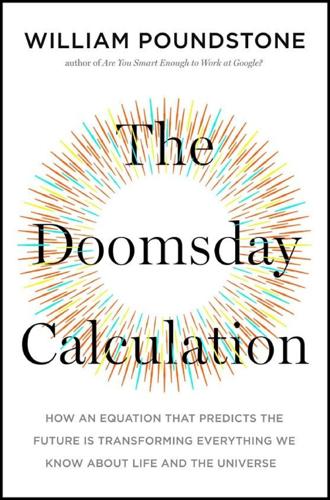
The Doomsday Calculation: How an Equation That Predicts the Future Is Transforming Everything We Know About Life and the Universe
by
William Poundstone
Published 3 Jun 2019
The universe would have been a thin, featureless gas with no stars, no solid objects, and (so we have to suppose) no observers. Had the density of dark energy been negative (as is possible in string theory) and of significantly larger magnitude, the universe would have quickly collapsed in a “big crunch,” before intelligent life had time to evolve. Ken Olum and Delia Schwartz-Perlov estimate that the cosmological constant (a measure of the abundance of dark energy) is about 10120 times bigger than is expected by theory. This suggests that the chance of there being a universe like ours can be no greater than about 1 in 10120. That’s written as a 1 with 120 zeros after it, much bigger than the number of atoms in the observed universe.
…
Dyson, Freeman J. “Reality Bites” (review of John Leslie’s The End of the World). Nature 380 (1996): 296. . “Time Without End: Physics and Biology in an Open Universe.” Reviews of Modern Physics 51 (1979): 447–460. Dyson, Lisa, Matthew Kleban, and Leonard Susskind. “Disturbing Implications of a Cosmological Constant.” 2002. arXiv:hep-th/0208013. Eckhardt, William. Paradoxes in Probability Theory. Dordrecht: Springer, 2013. . “Probability Theory and the Doomsday Argument.” Mind 102 (1993): 483–488. . “A Shooting-Room View of Doomsday.” Journal of Philosophy 94 (1997): 244–259. Eddington, Arthur. The Nature of the Physical World.
…
Eddington and the fine-structure constant: Kragh 2003 has an amusing account. 3. two-dimensional world: Victorian schoolmaster Edwin Abbott Abbott’s short fantasy novel Flatland: A Romance of Many Dimensions (1884) initiated thinking about 2-D life. It has been followed by many more earnestly scholarly treatments. 4. Whitrow’s argument for the necessity of 3-D space: Whitrow 1955, 31. 5. Cosmological constant is 10120 times bigger: Olum and Schwartz-Perlov 2007. 6. “a magic number”; “hand of God”: Feynman 1985, 129. 7. “You must not fool yourself”: Feynman as told to Leighton 1985, 343. 8. Selection process is different from bearded patriarch: John Leslie has argued that we ought to take seriously the possibility of a Platonic principle (not necessarily a “god” in the traditional sense) selecting universes compatible with observers.
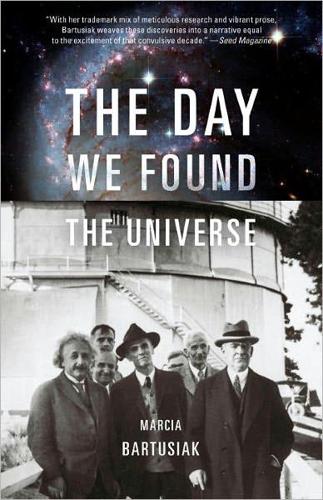
Day We Found the Universe
by
Marcia Bartusiak
Published 6 Apr 2009
Ultimately, the universe would collapse under the inescapable pull of gravity. So, to avoid this cosmic calamity and match his theory with then-accepted astronomical observations, Einstein altered his famous equation, adding the term λ (the Greek letter lambda), a fudge factor that came to be called the “cosmological constant.” This new ingredient was an added energy that permeated empty space and exerted an outward “pressure” on it. This repulsive field—a kind of antigravity, actually—exactly balanced the inward gravitational attraction of all the matter in his closed universe, keeping it from moving. As a result, the universe remained immobile, “as required by the fact of the small velocities of the stars,” wrote Einstein in his classic 1917 paper.
…
At a follow-up session a week later, Einstein went further and announced that “the red shift of distant nebulae has smashed my old construction like a hammer blow,” swiftly swinging down his hand to illustrate the point to his audience. Einstein at this stage recognized that he no longer needed his cosmological constant to describe this dynamic universe. His original equations could handle the cosmic expansion just fine, which pleased him immensely. From the start, he had had qualms about the ad hoc addition, believing the constant tarnished the formal beauty of his theory. Tacking on the extra term, he reportedly said, was the “biggest blunder” he ever made in his life.
…
Just weeks before his death he finished the measurement of his five hundredth parallax field at the observatory's Pasadena headquarters. Though he was wrong on spiral rotations, van Maanen remained a world-class surveyor of stellar parallaxes. Georges Lemaître made few notable contributions to cosmology after 1934 but continued to publish reviews and discussions. Although Einstein abandoned the cosmological constant λ in 1931, Lemaître continued to champion it. They had friendly arguments about this issue whenever they met, which led to the joke that “everywhere the two men went, the lambda was sure to go.” Lemaître went on to do important work in celestial mechanics and pioneered the use of electronic computers for numerical calculations.
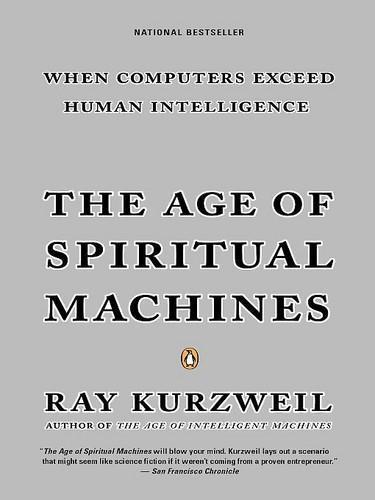
The Age of Spiritual Machines: When Computers Exceed Human Intelligence
by
Ray Kurzweil
Published 31 Dec 1998
THE END OF THE UNIVERSE What does the Law of Time and Chaos say about the end of the Universe? One theory is that the Universe will continue its expansion forever. Alternatively, if there’s enough stuff, then the force of the Universe’s own gravity will stop the expansion, resulting in a final “big crunch.” Unless, of course, there’s an antigravity force. Or if the “cosmological constant,” Einstein’s “fudge factor,” is big enough. I’ve had to rewrite this paragraph three times over the past several months because the physicists can’t make up their minds. The latest speculation apparently favors indefinite expansion. Personally, I prefer the idea of the Universe closing in again on itself as more aesthetically pleasing.
…
The laws of physics are not repealed by intelligence, but they effectively evaporate in its presence. So will the Universe end in a big crunch, or in an infinite expansion of dead stars, or in some other manner? In my view, the primary issue is not the mass of the Universe, or the possible existence of antigravity, or of Einstein’s so-called cosmological constant. Rather, the fate of the Universe is a decision yet to be made, one which we will intelligently consider when the time is right. TIME LINE 12 HOW TO BUILD AN INTELLIGENT MACHINE IN THREE EASY PARADIGMS As Deep Blue goes deeper and deeper, it displays elements of strategic understanding.
…
Champernowne, David Chang, Young chaos evolution and evolutionary algorithms and Law of Increasing Chaos Law of Time and Chaos Chelyabinsk ,Chernobyl chess Deep Blue’s playing of legend of inventor of Pick Best Move program for quantum computing and China legend of emperor of chips, computer Moore’s Law and, see Moore’s Law three-dimensional Chuang, Isaac Chuang-tzu Church, Alonzo Church, Ken Churchill, Winston Church-Turing thesis Clarke, Arthur C cochlear implants Cohen, Harold color perception Colossus common sense communication in animals in arts future technologies for compact disc (CD) compact disc read-only memory (CD-ROM) complexity computation achieving human-level capabilities in crystalline density of destruction of information in digital DNA exponential growth of inevitability of on Internet, proposal for irreversibility of Law of Accelerating Returns applied to nanotubes and optical order and quantum, see quantum computing Turing Machine model of see also artificial intelligence; intelligence computers art and, see arts Babbage’s Analytical Engine chips in, see chips, computer consciousness in dependence on first American programmable intelligence of, see artificial intelligence knowledge gathering and sharing by Moore’s Law and, see Moore’s Law neural, see neural nets number of past predictions made about programming of, compared with evolution in schools speed and power of supercomputers in 2009 in 2019 in 2029 world’s first operational Y2K and Computing Machinery and Intelligence (Turing) consciousness brain and in computers/AI Descartes’s dictum and as “different kind of stuff” in evolution as function of pattern, vs. particles human inability to understand logical positivist view of as machine reflecting on itself multiple Plato’s views on quantum mechanics and schools of thought on testability of Turing Test and, see Turing Test Universe and see also identity context continuous speech recognition (CSR) Voice Xpress Plus Cope, David cosmological constant Crick, Francis H. C. cryonics crystalline computing Cser, Jim Curl, Robert deaf persons cochlear implants for death, see mortality Debussy, Claude Deep Blue (chess-playing computer) De Garis, Hugo DENDRAL Dennett, Daniel Descartes, René digital digital computing digital video disc (DVD) dinosaurs disabilities blindness, see blind persons deafness, see deaf persons neural implants and, see neural implants prosthetic devices and in 2009 in 2019 in 2029 disease cancer cryonics and pathogens in, see pathogens see also medicine DNA computing with error correction in in evolution of Homo sapiens vs. primates protein synthesis and see also genes, genetic code Dogbert Donovan Drexler, Eric Dreyfus, Hubert driving drugs Dyson, Esther Earth formation of eating economy, see business, economics, and finance Edison, Thomas Alva education computers in schools teachers and teaching in in 2009 in 2019 in 2029 see also learning Einstein, Albert cosmological constant of on simplification theory of relativity of Eisenhower, Dwight electrocardiogram (EKG) electromagnetic force electrons tunneling of electroweak force Emerson, Ralph Waldo EMI (Experiments in Musical Intelligence) emotions in animals produced by brain stimulation Emperors New Mind, The (Penrose) employment encryption Pretty Good Privacy quantum engines, jet Engines of Creation (Drexler) Enigma code entropy Increasing, Law of, see second law of thermodynamics Evans, Thomas G.

Stephen Hawking
by
Leonard Mlodinow
Published 8 Sep 2020
Others, after Newton, tried to modify his theory to make gravity repulsive at long distances, employing a mathematical alteration small enough that it wouldn’t noticeably affect the orbit of the planets but large enough that it keeps the universe from collapsing upon itself. They were unsuccessful. Even Einstein joined the game. He added an extra “anti-gravity” term, called the cosmological constant, to the equations of general relativity to supply the repulsive force needed to keep the cosmos from contracting.*2 The realization that all these eminent philosophers and scientists were misguided—that the universe is changing, expanding, evolving—is one of the most extraordinary discoveries of the twentieth century.
…
But the mathematics proving that the big bang is a necessity of Einstein’s equations—that came from Stephen, in his first major foray into the world of physics. *1 By “unchanging” they meant on the cosmic scale. Obviously, small-scale change is part of nature—planets orbit, rocks fall, people live and die. *2 The cosmological constant acts only on very large scales. It introduced no effects that could be measured with the technology available at the time, and so whether or not to include it was a choice Einstein was free to make. In 1998 that changed. The term really does need to be there. 5 Several months had passed since my punting visit.

Dawn of the New Everything: Encounters With Reality and Virtual Reality
by
Jaron Lanier
Published 21 Nov 2017
Our idea was that enough of this type of computing activity would change the curvature of the universe. Certainly the idea is nuts, but there aren’t any saner ideas around to address a problem, which is that the cosmological constant, which determines how curved the universe is, is a lot smaller than it ought to be. So why not: Alien computers are unbending the universe. The cosmological constant becomes a measure of how full the cosmic hard drive is, since alien information would be stored nonlocally in the whole visible universe. When we look at the night sky, we not only see a universe teeming with life, but with life that hacks.
…
pixel-painting and security and speed of thinking like confocal microscope Conn, Coco consciousness consensus decision making consensus reality Consumer Electronics Show content context contrabassoon conversion moment convolution Conway, John Horton Cooper Union Copper Canyon copyright and intellectual property Cornell University corporations. See also tech companies cosmological constant cost of choice cowboy metaphor Coxeter, Harold Scot MacDonald “Donald” crackers crankiness, online creativity Cruz-Neira, Carolina cube, made by computer cyber, origin of term cyber-Darwinian effect cyber-Marxist utopia cybernetics cyberpunk cyber rights Cybersax cyberspace declaration of independence for two-tier schemes Cynthia Dance Central Daniilidis, Kostas DARPA Dartmouth data AI and value from people new money and power and dataflow data fusion geo-visualizations DataGlove DataSuits D’Cuckoo band debugging “Declaration of Independence for Cyberspace” DeCoven, Bernie deep learning DeFanti, Tom Defense Department del Rey, Lester demigods democracy Democratic Party “denting the universe” depth cameras depth capacities depth maps Deren, Maya Dick, Philip K.
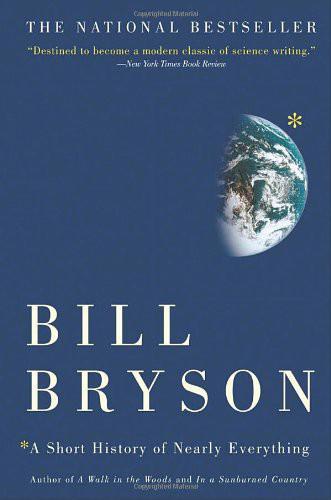
A Short History of Nearly Everything
by
Bill Bryson
Published 5 May 2003
But Einstein was not a cosmologist, and he accepted the prevailing wisdom that the universe was fixed and eternal. More or less reflexively, he dropped into his equations something called the cosmological constant, which arbitrarily counterbalanced the effects of gravity, serving as a kind of mathematical pause button. Books on the history of science always forgive Einstein this lapse, but it was actually a fairly appalling piece of science and he knew it. He called it “the biggest blunder of my life.” Coincidentally, at about the time that Einstein was affixing a cosmological constant to his theory, at the Lowell Observatory in Arizona, an astronomer with the cheerily intergalactic name of Vesto Slipher (who was in fact from Indiana) was taking spectrographic readings of distant stars and discovering that they appeared to be moving away from us.
…
The theory is that empty space isn't so empty at all—that there are particles of matter and antimatter popping into existence and popping out again—and that these are pushing the universe outward at an accelerating rate. Improbably enough, the one thing that resolves all this is Einstein's cosmological constant—the little piece of math he dropped into the general theory of relativity to stop the universe's presumed expansion, and called “the biggest blunder of my life.” It now appears that he may have gotten things right after all. The upshot of all this is that we live in a universe whose age we can't quite compute, surrounded by stars whose distances we don't altogether know, filled with matter we can't identify, operating in conformance with physical laws whose properties we don't truly understand.
…
August 25, 1997, p. 34. 38 “two-thirds of the universe is still missing . . .” Economist, “Dark for Dark Business,” January 5, 2002, p. 51. 39 “The theory is that empty space isn't so empty at all . . .” PBS Nova, “Runaway Universe,” Transcript from program first broadcast November 21, 2000. 40 “Einstein's cosmological constant . . .” Economist, “Dark for Dark Business,” January 5, 2002, p. 51. CHAPTER 12 THE EARTH MOVES 1 “invited the reader to join him in a tolerant chuckle . . .” Hapgood, Earth's Shifting Crust, p. 29. 2 “they posited ancient ‘land bridges' . . .” Simpson, p. 98. 3 “Even land bridges couldn't explain some things.”

Deep Utopia: Life and Meaning in a Solved World
by
Nick Bostrom
Published 26 Mar 2024
However, we do also have reason to think that limits exist on the finally attainable size of the economy, at least if we assume that our current physical and cosmological theories cover all the relevant bases. This is what we will be talking about today: ultimate boundaries—not just to “the economy” narrowly conceived, but more generally the boundaries of technology and the boundaries of an ultimate utopian condition. At the simplest level, given the observed positive cosmological constant, general relativity implies that the volume (in comoving coordinates) of the universe that is accessible from our current spatiotemporal location is finite, and the amount of matter contained within this volume is also finite.48 And decreasing: with each passing year our civilization remains in its starting blocks on planet Earth, approximately three more galaxies glide out of the previously affectable universe and are lost to us forever.49 It doesn’t strictly follow from this that the economy has a maximum possible size.
…
If these can travel at 50% of the speed of light, they can reach some 6×1018 stars before the cosmic expansion puts further acquisitions forever out of reach. At 99% of c, they could reach some 2×1020 stars. These travel speeds are energetically attainable using a small fraction of the resources available in the solar system. The impossibility of faster-than-light travel, combined with the positive cosmological constant (which causes the rate of cosmic expansion to accelerate), implies that these are close to upper bounds on how much stuff our descendants acquire. If we assume that 10% of stars have a planet that is—or could by means of terraforming be rendered—suitable for habitation by human-like creatures, and that it could then be home to a population of a billion individuals for a billion years (with a human life lasting a century), this suggests that around 1035 human lives could be created in the future by an Earth-originating intelligent civilization.
…
I should emphasize that the numbers in this handout are premissed on what we may call “the naive picture” of our situation. In particular, this involves the assumption that the relevant parts of our current physical theories are correct (concerning the speed of light, the thermodynamics of computation, the positive cosmological constant, etc.), which is maybe not so implausible if we are living in the basement universe—but is totally up for grabs if we are living in a simulation. If we are in a simulation, it might be set to terminate long before the heat death of the simulated universe; and what appears to us to be distant stars and galaxies might simply be realistically rendered illusions, but without any actual “there” there.
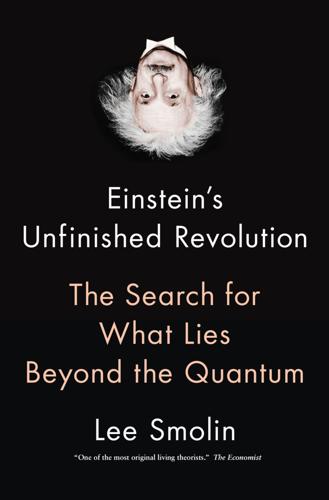
Einstein's Unfinished Revolution: The Search for What Lies Beyond the Quantum
by
Lee Smolin
Published 31 Mar 2019
They believe the history of the universe is, at its most fundamental, a discrete causal set, from which emerges, on a sufficiently large scale, the illusion of a continuous spacetime. Just like a liquid appears to us continuous but is actually made up of discrete atoms, the events of the causal set would constitute the atoms of spacetime. One great success of the causal set theory is that it predicted the rough value of the cosmological constant. Sorkin derived this prediction before the cosmological constant was measured.2 It was the only approach to quantum gravity to do so. The causal set hypothesis is one of several competing hypotheses concerning the properties of spacetime atoms. Compared to the others, such as spin foam models, it enjoys the great advantage of its utter simplicity, in that the only properties of events are their causal relations.
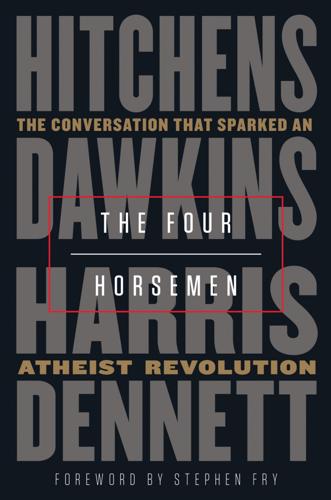
The Four Horsemen
by
Christopher Hitchens
,
Richard Dawkins
,
Sam Harris
and
Daniel Dennett
Published 19 Mar 2019
The most successful anti-religious polemic there’s probably ever been in the modern world – in the twentieth century, anyway. HARRIS: I think we just touched upon an issue that we should highlight: this whole notion of authority. Because religious people often argue that science is just a series of uncashed cheques and we’re all relying on authority: ‘How do you know that the cosmological constant is… ?’ whatever it is. So, differentiate between the kind of faith-placing in authority that we practise without fear in science, and in rationality generally, and the kind of faith-placing in the preacher or the theologian, which we criticize. DAWKINS: But what we actually do when we, who are not physicists, take on trust what physicists say, is that we have some evidence that suggests that physicists have looked into the matter – that they’ve done experiments, that they’ve peer-reviewed their papers, that they’ve criticized each other, that they’ve been subjected to massive criticism from their peers in seminars and in lectures.

Global Catastrophic Risks
by
Nick Bostrom
and
Milan M. Cirkovic
Published 2 Jul 2008
Laughlin, G., Bodenheiemr, P., and Adams, F.C. ( 1997). The end of the main sequence. Astrophys. ]., 482, 420. Nagamine, K. and Loeb, A. (2003). Future evolution of nearby large-scale structures in a universe dominated by a cosmological constant. New Astron., 8, 439-448. Nagamine, K. and Loeb, A. (2004). Future evolution of the intergalactic medium in a universe dominated by a cosmological constant. New Astron., 9, 573-583. Page, D. N. ( 1 980) . Particle transmutations in quantum gravity. Phys. Lett., B95, 244-246. Peebles, P.J .E. ( 1994). Orbits of the nearby galaxies. Astrophys. j., 429, 43-65. Perlmutter, S., Aldering, G., Goldhaber, G., Knop, R.A., Nugent, P., Castro, P.G., Deustua, S., Fabbro, S . , Goobar, A., Groom, D.E., Hook, I.M., Kim, A.G., Kim, M.Y., Lee, ).C., Nunes, N.J., Pain, R., Pennypacker, C.R., Quimby, R., Lidman, C., Ellis, R.S., Irwin, M . , McMahon, R.G., Ruiz-Lapuente, P., Walton, N., Schaefer, B., Boyle, B.J., Filippenko, A.V., Matheson, T., Fruchter, A.S., Panagia, N., Newberg, H . ) .
…
This chapter outlines some of the astrophysical events that can affect life, on our planet and perhaps 1 'Dark energy' is a common term unifYing different models for the ubiquitous form of energy permeating the entire universe (about 70% of the total energy budget of the physical universe) and causing accelerated expansion of space time. The most famous of these models is Einstein's cosmological constant, but there are others, going under the names of quintessence, phantom energy, and so on. They are all characterized by negative pressure, in sharp contrast to all other forms of energy we see around us. 34 Global catastrophic risks elsewhere, over extremely long time scales, including those that vastly exceed the current age of the universe.
…
Riess, A.G., Filippenko, A.V., Challis, P., Clocchiatti, A., Diercks, A., Garnavich, P.M., Gilliland, R.L., Hogan, C.)., jha, S., Kirshner, R.P., Leibundgut, B . , Phillips, M . M . , Long-term astrophysical processes 47 Reiss, D . , Schmidt, B.P., Schommer, R.A., Smith, R.C., Spyromilio, ) . , Stubbs, C., Suntzeff, N.B., and Tonry, J . ( 1998). Observational evidence from supernovae for an accelerating universe and a cosmological constant. Astron. ]., 116, 1009-1038. Rybicki, K.R. and Denis, C. (2001). On the final destiny of the Earth and the Solar System. Icarus, 1 5 1 , 1 30-1 37. Sackmann, !.) ., Boothroyd, A.!., and Kramer, K.E . ( 1 993). Our Sun I I I : present and future. Astrophys. ]., 418, 457-468. Spergel, D.N., Verde, L., Peiris, H .V., Komatsu, E . , Nolta, M.R., Bennett, C.L., Halpern, M . , Hinshaw, G., Jarosik, N . , Kogut, A., Limon, M . , Meyer, S.S., Page, L., Tucker, G.S., Weiland, ) .
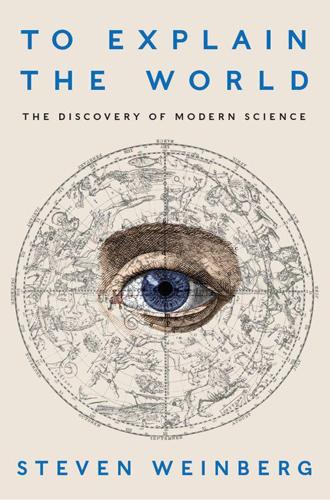
To Explain the World: The Discovery of Modern Science
by
Steven Weinberg
Published 17 Feb 2015
For a photograph of this statue, taken by Owen Gingerich, see the frontispiece of my essay collection Facing Up—Science and Its Cultural Adversaries (Harvard University Press, Cambridge, Mass., 2001). 14. S. Weinberg, “Anthropic Bound on the Cosmological Constant,” Physical Review Letters 59, 2607 (1987); H. Martel, P. Shapiro, and S. Weinberg, “Likely Values of the Cosmological Constant,” Astrophysical Journal 492, 29 (1998). 15. J. R. Voelkel and O. Gingerich, “Giovanni Antonio Magini’s ‘Keplerian’ Tables of 1614 and Their Implications for the Reception of Keplerian Astronomy in the Seventeenth Century,” Journal for the History of Astronomy 32, 237 (2001). 16.
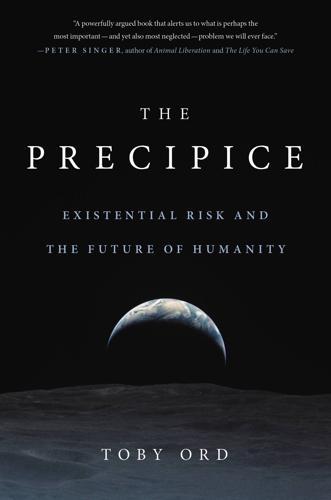
The Precipice: Existential Risk and the Future of Humanity
by
Toby Ord
Published 24 Mar 2020
“Power Laws Governing Epidemics in Isolated Populations.” Nature, 381(6583), 600–2. Rhodes, R. (1986). The Making of the Atomic Bomb. Simon and Schuster. —(1995). Dark Sun: The Making of the Hydrogen Bomb. Simon and Schuster. Riess, A. G., et al. (1998). “Observational Evidence from Supernovae for an Accelerating Universe and a Cosmological Constant.” The Astronomical Journal, 116(3), 1,009–38. Risø (1970). Project Crested Ice. A Joint Danish-American Report on the Crash near Thule Air Base on 21 January 1968 of a B-52 Bomber Carrying Nuclear Weapons (Report No. 213). Forskningscenter Risø, Atomenergikommissionen. Ritchie, H., and Roser, M. (2019).
…
The accelerating expansion of the universe was discovered only in the late 1990s (Riess et al., 1998)—work that won the 2011 Nobel Prize in Physics. In the paragraphs that follow, I’m describing the limits as they would be under the simplest known account of accelerating expansion, where it is due to a cosmological constant. This is known as the “concordance cosmology” or ΛCDM. Other explanations of accelerating expansion (including that it is illusory) may produce quite different limits, or even no limits at all. 32 The light from these galaxies has only had 13.8 billion years (the age of our universe) to reach us, but they are currently 46 billion light years away, as the space in between has been expanding in the meantime. 33 The 63 billion light year limit is the sum of the distance we can currently observe (46.4 billion light years) and the distance we can currently affect (16.5 billion light years).

Superintelligence: Paths, Dangers, Strategies
by
Nick Bostrom
Published 3 Jun 2014
If these can travel at 50% of the speed of light, they can reach some 6×1018 stars before the cosmic expansion puts further acquisitions forever out of reach. At 99% of c, they could reach some 2×1020 stars.16 These travel speeds are energetically attainable using a small fraction of the resources available in the solar system.17 The impossibility of faster-than-light travel, combined with the positive cosmological constant (which causes the rate of cosmic expansion to accelerate), implies that these are close to upper bounds on how much stuff our descendants acquire.18 If we assume that 10% of stars have a planet that is—or could by means of terraforming be rendered—suitable for habitation by human-like creatures, and that it could then be home to a population of a billion individuals for a billion years (with a human life lasting a century), this suggests that around 1035 human lives could be created in the future by an Earth-originating intelligent civilization.19 There are, however, reasons to think this greatly underestimates the true number.
…
This would result in an approximate sphere of expanding infrastructure centered on the originating planet and growing in radius at some fraction of the speed of light; and the colonization of the universe would continue in this manner until the accelerating speed of cosmic expansion (a consequence of the positive cosmological constant) makes further procurements impossible as remoter regions drift permanently out of reach (this happens on a timescale of billions of years).20 By contrast, agents lacking the technology required for inexpensive resource acquisition, or for the conversion of generic physical resources into useful infrastructure, may often find it not cost-effective to invest any present resources in increasing their material endowments.
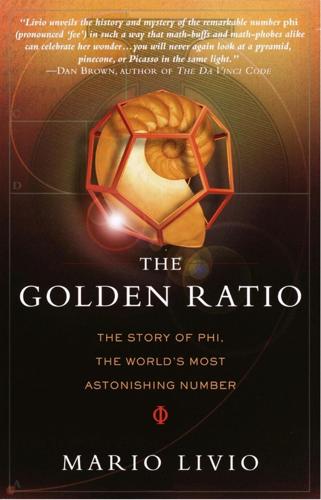
The Golden Ratio: The Story of Phi, the World's Most Astonishing Number
by
Mario Livio
Published 23 Sep 2003
ALSO BY MARIO LIVIO The Accelerating Universe: Infinite Expansion, the Cosmological Constant, and the Beauty of the Cosmos In memory of my father Robin Livio PREFACE The Golden Ratio is a book about one number—a very special number. You will encounter this number, 1.61803…, in lectures on art history, and it appears in lists of “favorite numbers” compiled by mathematicians. Equally striking is the fact that this number has been the subject of numerous experiments in psychology. I became interested in the number known as the Golden Ratio fifteen years ago, as I was preparing a lecture on aesthetics in physics (yes, this is not an oxymoron), and I haven't been able to get it out of my head since then.
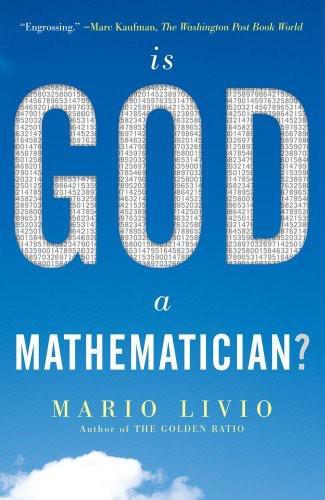
Is God a Mathematician?
by
Mario Livio
Published 6 Jan 2009
ALSO BY MARIO LIVIO The Equation That Couldn’t Be Solved: How Mathematical Genius Discovered the Language of Symmetry The Golden Ratio: The Story of Phi, the World’s Most Astonishing Number The Accelerating Universe: Infinite Expansion, the Cosmological Constant, and the Beauty of the Cosmos Simon & Schuster 1230 Avenue of the Americas New York, NY 10020 Copyright © 2009 by Mario Livio All rights reserved, including the right to reproduce this book or portions thereof in any form whatsoever. For information address Simon & Schuster Subsidiary Rights Department, 1230 Avenue of the Americas, New York, NY 10020.

The Singularity Is Near: When Humans Transcend Biology
by
Ray Kurzweil
Published 14 Jul 2005
We are struck with two possible applications of an anthropic principle, one for the remarkable biofriendly laws of our universe, and one for the actual biology of our planet. Let's first consider the anthropic principle as applied to the universe in more detail. The question concerning the universe arises because we notice that the constants in nature are precisely what are required for the universe to have grown in complexity. If the cosmological constant, the Planck constant, and the many other constants of physics were set to just slightly different values, atoms, molecules, stars, planets, organisms, and humans would have been impossible. The universe appears to have exactly the right rules and constants. (The situation is reminiscent of Steven Wolfram's observation that certain cellular-automata rules [see the sidebar on p. 85] allow for the creation of remarkably complex and unpredictable patterns, whereas other rules lead to very uninteresting patterns, such as alternating lines or simple triangles in a repeating or random configuration.)
…
My conjecture is that intelligence will ultimately prove more powerful than these big impersonal forces.... So will the universe end in a big crunch, or in an infinite expansion of dead stars, or in some other manner? In my view, the primary issue is not the mass of the universe, or the possible existence of antigravity, or of Einstein's so-called cosmological constant. Rather, the fate of the universe is a decision yet to be made, one which we will intelligently consider when the time is right.94 Complexity theorist James Gardner combined my suggestion on the evolution of intelligence throughout the universe with Smolin's and Susskind's concepts of evolving universes.

Origin Story: A Big History of Everything
by
David Christian
Published 21 May 2018
Most astronomers were shocked by the idea of an expanding universe and assumed there was an error in Hubble’s calculations. Hubble himself was not at all sure about it, and Einstein was so convinced the universe was stable that he fiddled with the equations of general relativity so they would predict a stable universe, by adding what he called a cosmological constant. Astronomers were skeptical partly because there really were problems with Hubble’s estimates. He calculated that the expansion of the universe had begun just two billion years ago, yet astronomers already knew that Earth and its solar system were much older than that. That is one reason why, for several decades, most astronomers regarded the idea of an expanding universe as intriguing but probably wrong.
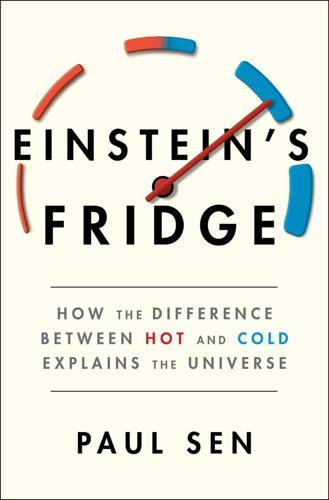
Einstein's Fridge: How the Difference Between Hot and Cold Explains the Universe
by
Paul Sen
Published 16 Mar 2021
“It turned out in the end”: See above. That field is information theory: For an excellent discussion of this, see “Information in the Holographic Universe” by Jacob D. Bekenstein, Scientific American, August 2003. The reason is that in 1998: See “Observational Evidence from Supernovae for an Accelerating Universe and a Cosmological Constant,” Astronomical Journal, September 1998; and “The Acceleration of the Expansion of the Universe: A Brief Early History of the Supernova Cosmology Project” by Gerson Goldhaber, AIP Conference Proceedings, 2009. so, too, is gravity: See “The Illusion of Gravity” by Juan Maldecena, Scientific American, April 1, 2007.
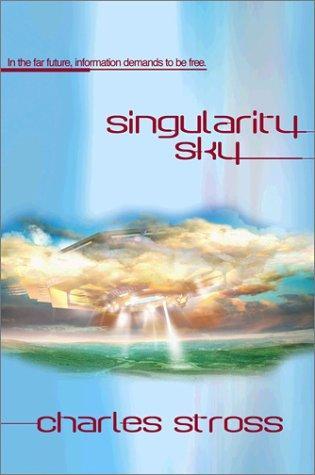
Singularity Sky
by
Stross, Charles
Published 28 Oct 2003
The rest of the letter was filled with idle chatter about fictional friends, reminiscences about trivial and entirely nonexistent shared memories and major (presumably well-documented) ones, and—as far as Martin could see—a content-free blind. He turned to the "dissertation." It was quite long, and he pondered Herman's wisdom in sending it. Did New Republican schoolchildren write eight-page essays about God? And about God's motives, as far as they could be deduced from the value of the cosmological constant? It was written in a precious, somewhat dull style that set his teeth on edge, like an earnest student essay hunting for marks of approval rather than a straight discursive monograph asserting a viewpoint. Then his eyes caught the footnotes: 1. Consider the hypothetical case of a power that intends to create a localized causality violation that does not produce a light cone encompassing its origin point.
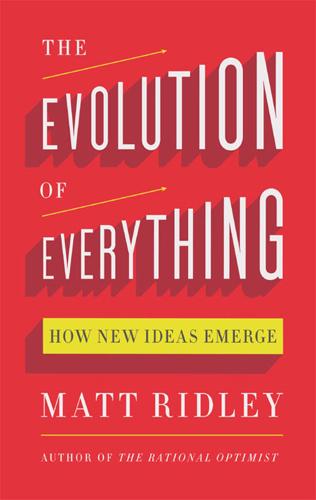
The Evolution of Everything: How New Ideas Emerge
by
Matt Ridley
In other words, if things had been just a little bit different, then stable suns, watery worlds and polymerised carbon would not be possible, so life could never get started. This stroke of cosmic luck implied that we lived in some kind of privileged universe uncannily suitable for us, and this was somehow spooky and cool. Certainly, there do seem to be some remarkably fortuitous features of our own universe without which life would be impossible. If the cosmological constant were any larger, the pressure of antigravity would be greater and the universe would have blown itself to smithereens long before galaxies, stars and planets could have evolved. Electrical and nuclear forces are just the right strength for carbon to be one of the most common elements, and carbon is vital to life because of its capacity to form multiple bonds.

Giving the Devil His Due: Reflections of a Scientific Humanist
by
Michael Shermer
Published 8 Apr 2020
According to England’s Astronomer Royal Sir Martin Rees, there are at least six constituents that are necessary for “our emergence from a simple Big Bang,” including (1) Ω (omega), the amount of matter in the universe = 1: if Ω were greater than 1, it would have collapsed long ago, and, if Ω were less than 1, no galaxies would have formed. (2) ε (epsilon), how firmly atomic nuclei bind together = 0.007: if ε were even fractionally different, matter could not exist. (3) D, the number of dimensions in which we live = 3. (4) N, the ratio of the strength of electromagnetism to that of gravity = 1039: if N were smaller, the universe would be either too young or too small for life to form. (5) Q, the fabric of the universe = 1/100,000: if Q were smaller, the universe would be featureless, and, if Q were larger, the universe would be dominated by giant black holes. (6) λ (lambda), the cosmological constant, or “antigravity” force that is causing the universe to expand at an accelerating rate = 0.7: if λ were larger, it would have prevented stars and galaxies from forming.2 The most common reason invoked for our universe’s “fine-tuning” is the “anthropic principle,” most forcefully argued by the physicists John Barrow and Frank Tipler in their 1986 book The Anthropic Cosmological Principle: It is not only man that is adapted to the universe.

Sunfall
by
Jim Al-Khalili
Published 17 Apr 2019
Theoretical physicists around the world are currently working on speculative mathematical models with such technical names as the Minimal Supersymmetric Standard Model with complex parameters (or cMSSM) and the cosmological concordance model, ΛCDM, which is read ‘Lambda-CDM’, standing for Cold Dark Matter plus the Cosmological constant. Well, you did ask! What’s that? You didn’t? Oh, OK. Acknowledgements Well, that was an adventure! over the past three years, whenever I was able to prise open a sufficient block of free time – a day here, a weekend there, evenings and long journeys – I would immerse myself in an exciting world of my own creation.

Rationality: From AI to Zombies
by
Eliezer Yudkowsky
Published 11 Mar 2015
And Einstein executed the whole long (multi-year!) chain of armchair reasoning, without making any mistakes that would have required further experimental evidence to pull him back on track. Even Jeffreyssai would be grudgingly impressed. Though he would still ding Einstein a point or two for the cosmological constant. (I don’t ding Einstein for the cosmological constant because it later turned out to be real. I try to avoid criticizing people on occasions where they are right.) What would be the probability-theoretic perspective on Einstein’s feat? Rather than observe the planets, and infer what laws might cover their gravitation, Einstein was observing the other laws of physics, and inferring what new law might follow the same pattern.
…
Einstein did not comprehend the Bayesian methods; he lived before the cognitive biases were discovered; he had no scientific grasp of his own thought processes. He was too caught up in the drama of rejecting his era’s quantum mechanics to actually fix it. And while I grant that Einstein reasoned cleanly in the matter of General Relativity—barring that matter of the cosmological constant—he took ten years to do it. Too slow!” “Too slow?” repeated Taji incredulously. “Too slow! If Einstein were in this classroom now, rather than Earth of the negative first century, I would rap his knuckles! You will not try to do as well as Einstein! You will aspire to do BETTER than Einstein or you may as well not bother!”
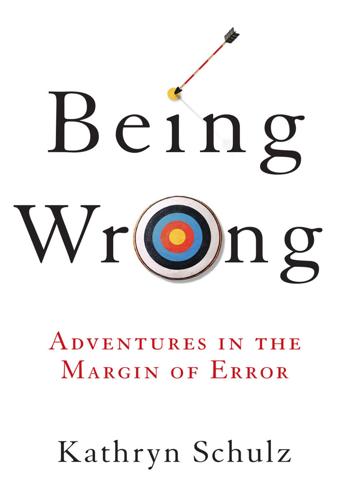
Being Wrong: Adventures in the Margin of Error
by
Kathryn Schulz
Published 7 Jun 2010
I’ve already suggested that error isn’t rare, yet it often seems remarkably scarce in our own lives—enough so that we should take a moment to establish exactly how un-rare it really is. By way of example, consider the domain of science. The history of that field is littered with discarded theories, some of which are among humanity’s most dramatic mistakes: the flat earth, the geocentric universe, the existence of ether, the cosmological constant, cold fusion. Science proceeds by perceiving and correcting these errors, but over time, the corrections themselves often prove wrong as well. As a consequence, some philosophers of science have reached a conclusion that is known, in clumsy but funny fashion, as the Pessimistic Meta-Induction from the History of Science.

The Year's Best Science Fiction: Twenty-Sixth Annual Collection
by
Gardner Dozois
Published 23 Jun 2009
Oh, why did I come here?’ Seriantep glanced up at the inconstant lumetubes, beyond to the distant diadem of her people’s colonies, gravid on decades of water. It was a question, Fejannen knew, that Serejen had asked himself many times. A postgraduate scholar researching space-time topologies and the cosmological constant. A thousand-year-old post-human innocently wearing the body of a twenty-year-old woman, playing the student. She could learn nothing from him. All the knowledge the Anpreen wanderers had gained in their ten thousands year migration was incarnate in her motes. She embodied all truth and she lied with every cell of her body.